Exploring French Food with Snails: A Culinary Adventure
Imagine this: you’re seated at a small, charming bistro tucked away in a cobblestone alley of Paris. The waiter approaches and sets down a plate that captures the essence of French culinary art—snails. This isn’t just food; it’s a tradition served with a garnish of history.
Welcome to the world of French cuisine where snails aren’t just a delicacy, they’re a cultural icon. In this article, we’ll dive deep into the allure of French food with snails, exploring everything from the classic recipes that have stood the test of time to the modern twists that are setting the culinary world abuzz.
Whether you’re a seasoned foodie or a curious novice, there’s something undeniably captivating about this unique aspect of French dining.
The History of Snails in French Cuisine
Snails, or ‘escargot’ as they are more elegantly termed in French, have a storied history in French cuisine that dates back centuries. The practice of eating snails in France can be traced to ancient times, used both as a food source by peasants and as a prized delicacy by the aristocracy during the Renaissance.
Today, escargot is synonymous with French gastronomy, enjoyed across the globe, and particularly revered in regions like Burgundy and Champagne. These regions are not only famous for their wines but also for their snail farms, where the tradition of heliciculture (snail farming) is passed down through generations.
This culinary tradition reflects a broader French cultural ethos that champions the elevation of humble ingredients to haute cuisine, making snails a perfect poster child for French culinary heritage.
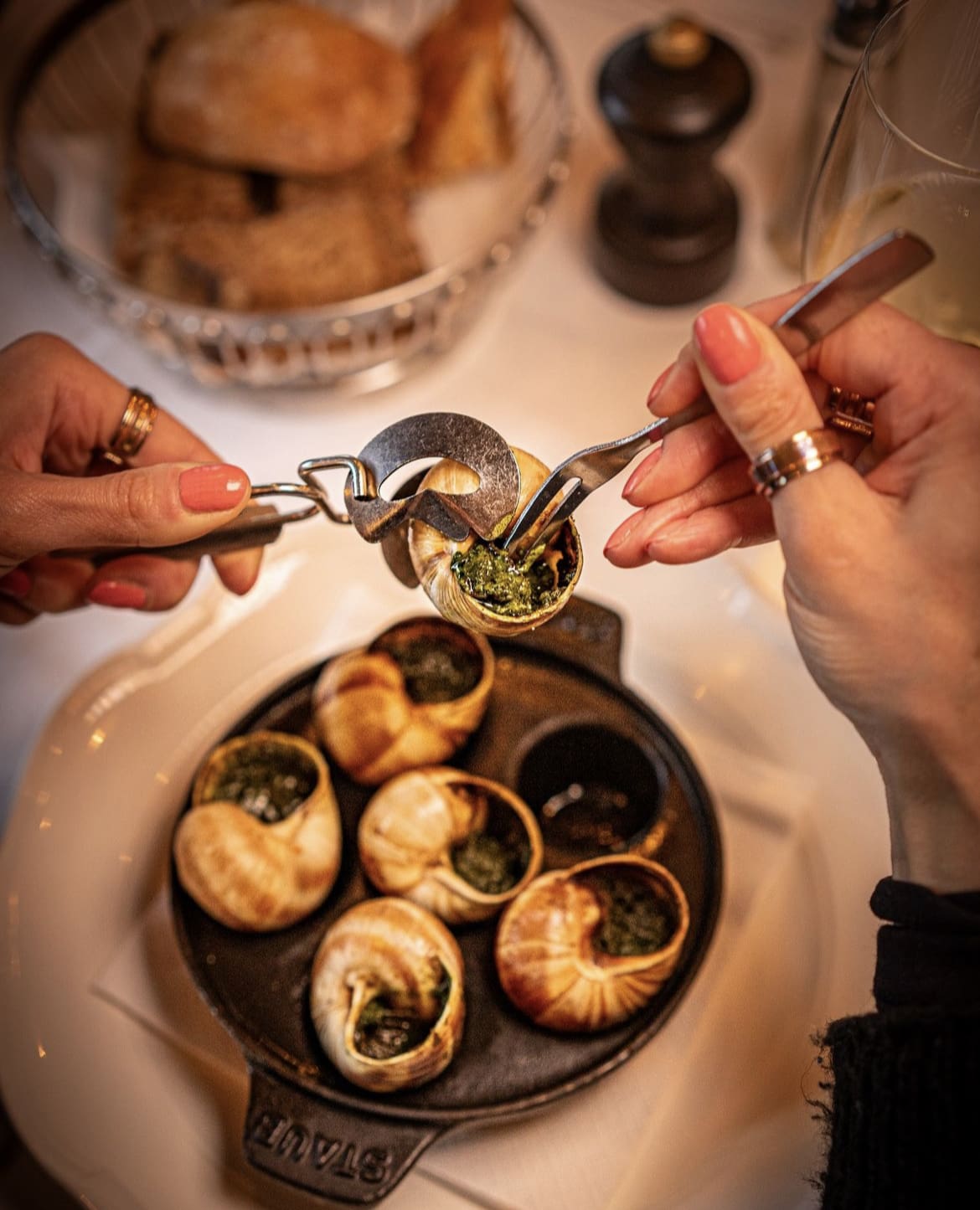
Types of Snails and Their Culinary Uses
When you think of snails in French food, you might picture just one type, but the reality is much more diverse. The two main types cherished in French gastronomy are the Petit Gris and the Bourgogne. The Petit Gris, or “little grey,” is smaller but known for its tender texture and delicate flavor, making it a popular choice for subtle dishes that require a refined taste.
On the other hand, the Bourgogne, named after the Burgundy region famous for its snails as well as its wines, is larger and offers a more robust flavor, ideal for bolder, aromatic recipes like the classic Escargot à la Bourguignonne.
These snails are not just thrown into any dish; their culinary use is an art form. They are typically prepared with garlic, butter, and fresh herbs, then often served in their shells or incorporated into puff pastries, soups, and even stews.
Understanding the type of snail and its corresponding flavor profile is crucial for chefs who use these gastropods as the centerpiece of their dishes. By matching the right type of snail with appropriate ingredients and cooking methods, chefs can elevate the snail from garden dweller to gourmet delight.
Classic French Snail Dishes
When delving into the realm of classic French snail dishes, one cannot overlook the quintessential Escargot à la Bourguignonne. This iconic dish features snails bathed in a luscious mix of melted butter, garlic, and parsley, served hot in their shells. Often, a special set of tongs and a tiny fork accompany the dish, allowing diners to pluck the snail meat from its shell—a ritual that adds to the culinary experience.
Another traditional dish is the less known but equally delectable Escargot de Bourgogne. Here, the snails are prepared with a blend of shallots, white wine, and a generous helping of cream, emphasizing the rich, earthy flavors that pair so well with a crusty baguette. These dishes are staples in French bistros and represent the heart of rustic French cooking, showcasing how a simple mollusk can be transformed into a sophisticated and deeply satisfying meal.
For those who are adventurous in the kitchen, trying your hand at these recipes can be a delightful endeavor. Start with pre-cooked snails, which can be found at specialty food stores, and remember, the key to perfecting these dishes lies in the quality of your ingredients—fresh garlic, high-quality butter, and a dash of love are essential.
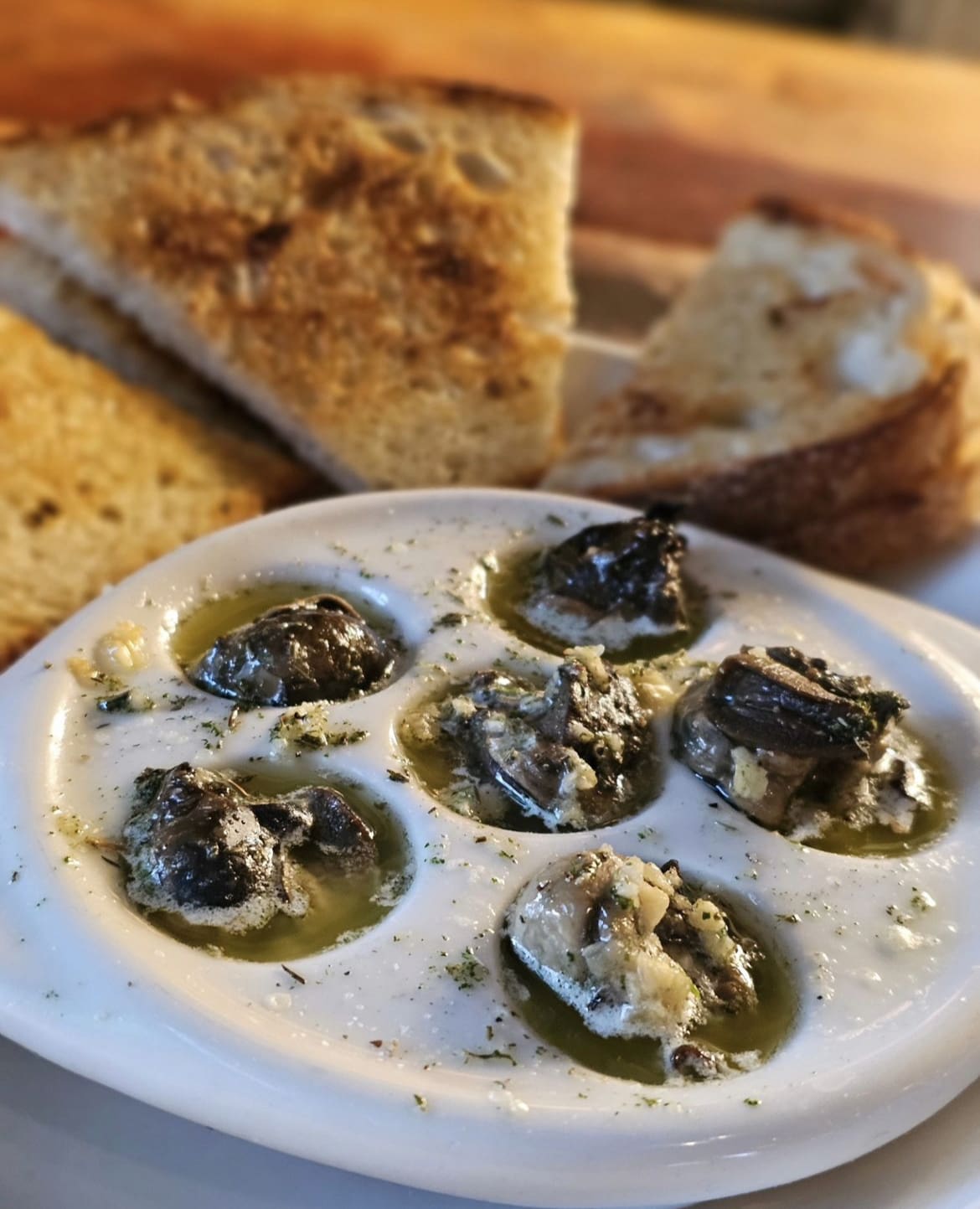
Modern Takes on Traditional Snail Recipes
In the ever-evolving landscape of French cuisine, contemporary chefs are breathing new life into traditional snail dishes, infusing them with modern flavors and techniques that appeal to the palate of today’s diner. These culinary innovators are not just sticking to the script of garlic and butter but are experimenting with ingredients like saffron, truffle, and exotic herbs to create bold new combinations.
One striking example is the snail risotto, a dish that marries the creamy, comforting texture of risotto with the earthy tones of snails, elevated by a hint of truffle oil that brings a luxurious depth to the plate. Another innovative creation is snail tartlets, where the snails are nestled in a delicate pastry shell, topped with blue cheese or Roquefort, marrying the mollusk’s subtle flavor with the strong, pungent taste of the cheese.
These dishes not only showcase the versatility of snails as an ingredient but also reflect the dynamic nature of French gastronomy, which respects its roots while eagerly embracing the new. Restaurants in the heart of Paris and beyond are featuring these contemporary snail dishes, attracting both locals and tourists eager to experience the modern twist on a classic French delicacy.
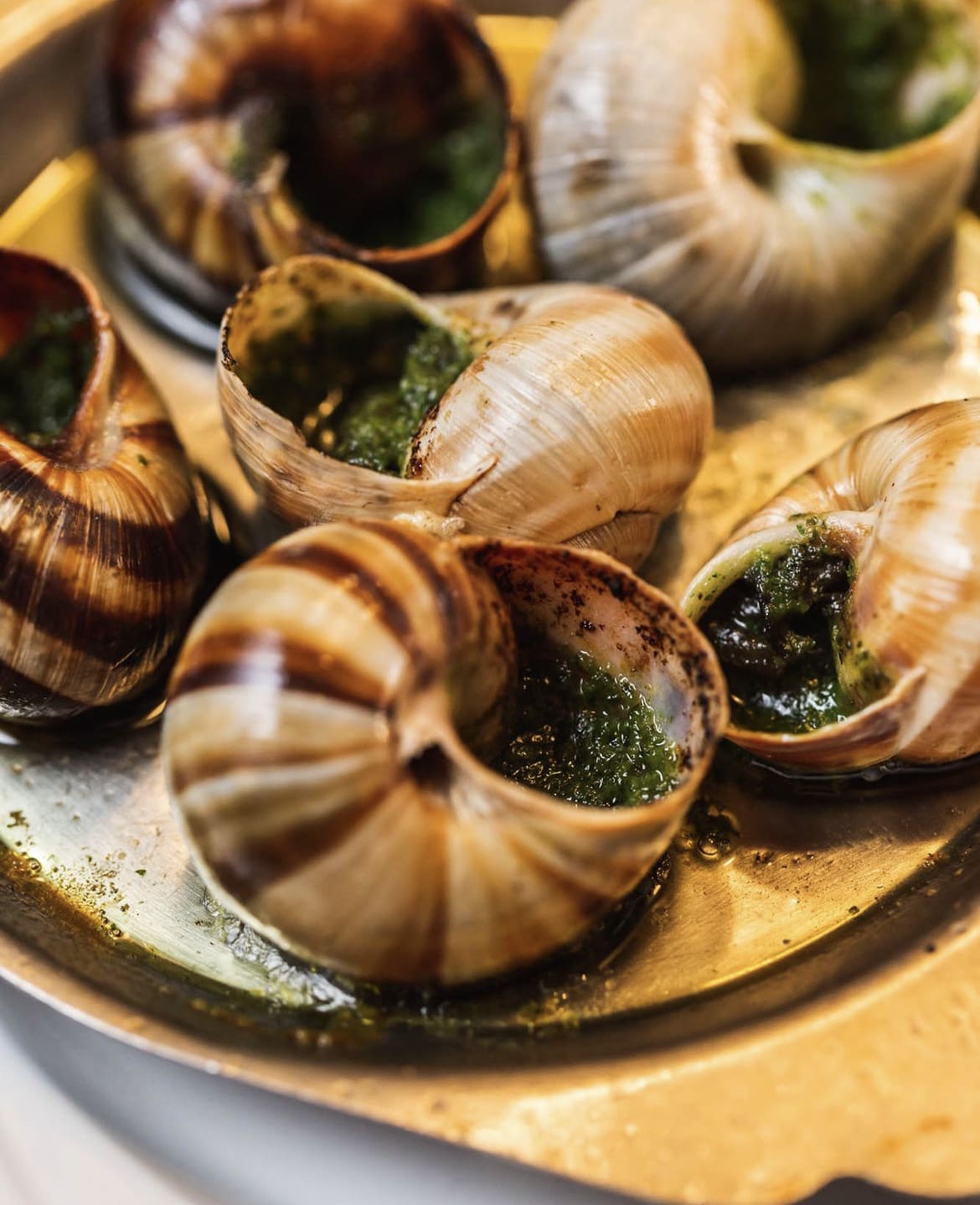
Cooking Tips for Preparing Snails at Home
Diving into the world of cooking snails at home can seem daunting, but with the right guidance and a few insider tips, you can bring this French delicacy into your own kitchen with confidence. Whether you’re aiming to recreate classic dishes or experiment with your own creations, here’s how you can start:
Where to Source Snails: First things first, finding quality snails is key. Look for canned or fresh snails at specialty gourmet shops or online. Fresh snails offer the best flavor but require more preparation.
Cleaning and Preparing Snails: If you opt for fresh snails, they need to be purged of any impurities. Place them in a box with cornmeal or bran for a few days to allow them to cleanse their digestive systems, changing the bedding daily. Before cooking, rinse them thoroughly under cold water.
Cooking Basics: To cook snails, simmer them in a court-bouillon (a flavorful broth of herbs, carrots, onions, and celery) for about three hours until tender. Once cooked, they can be used immediately or stored in the refrigerator for use in various recipes.
Simple Snail Butter Recipe: A good snail butter is essential for dishes like Escargot à la Bourguignonne. Combine softened butter with minced garlic, chopped parsley, salt, pepper, and a dash of brandy or white wine for an aromatic mixture. This can be piped back into the shells with the snails before baking.
Serving Suggestions: Snails can be served as an appetizer with a crisp white wine or incorporated into main dishes like the aforementioned risotto or pasta. They pair wonderfully with earthy flavors like mushroom and herbs, so feel free to experiment.
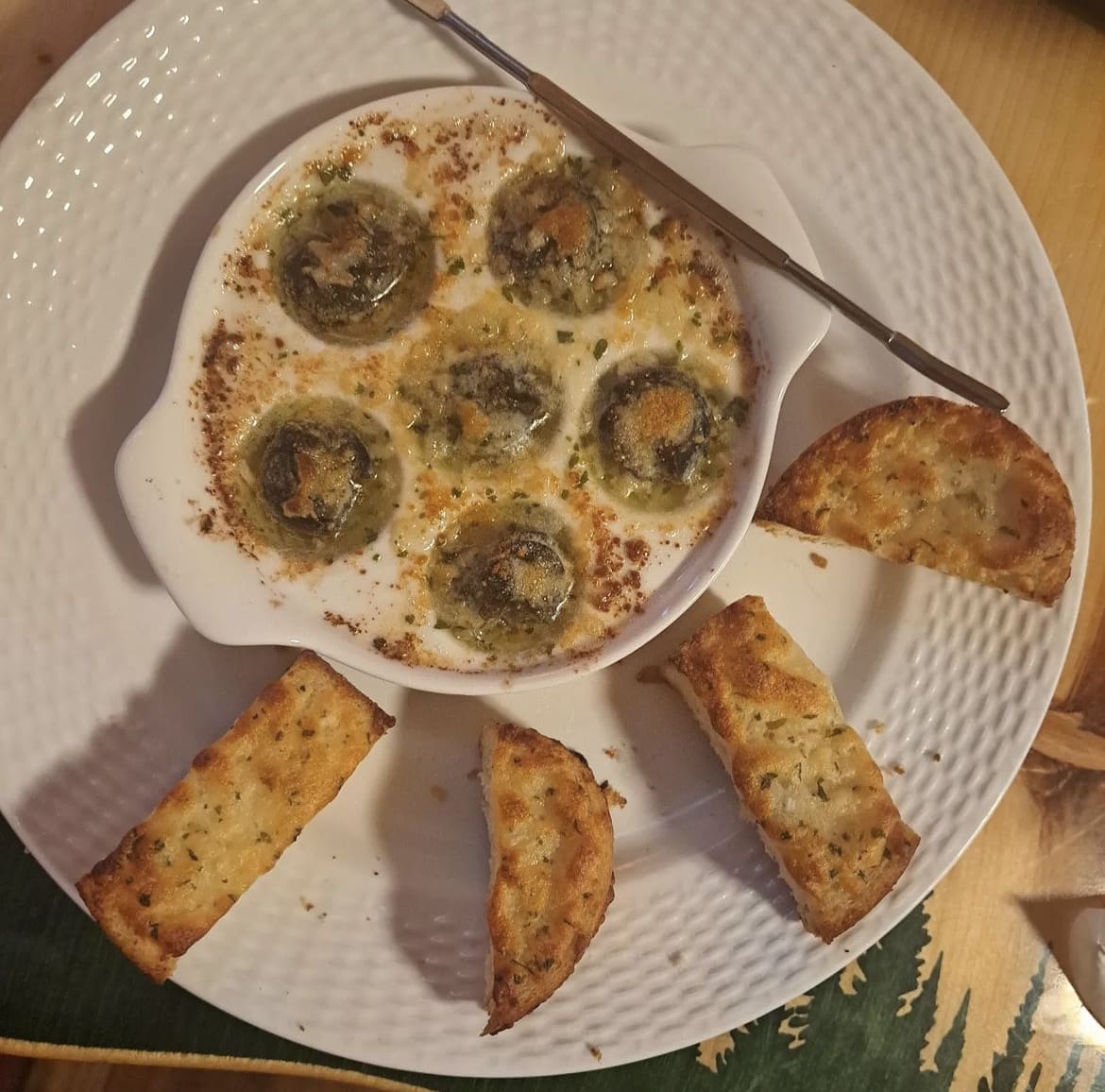
Best Wine Pairings with Snail Dishes
Pairing the right wine with snail dishes can elevate your dining experience to new heights, enhancing both the flavors of the meal and the overall enjoyment. Here’s how to select wines that complement the unique taste profiles of snail-based French cuisine:
White Wines: Typically, white wines are a go-to choice for snail dishes, especially those prepared with garlic and butter. A crisp, dry white wine like Chablis or Sauvignon Blanc cuts through the richness of the butter and complements the delicate flavors of the snails. The mineral undertones of a good Chablis particularly enhance dishes like Escargot à la Bourguignonne, balancing the garlic and herb notes beautifully.
Red Wines: If you prefer red wine, opt for a lighter, less tannic variety. A Pinot Noir, with its subtle earthy notes and mild tannins, pairs wonderfully with snail recipes that include mushrooms or are served in a red wine reduction. The soft fruitiness of the Pinot Noir complements the umami flavors without overwhelming the snails.
Sparkling Wines: For something a bit different, consider pairing snail dishes with a sparkling wine, such as Champagne or a good Crémant. The effervescence of sparkling wines provides a refreshing contrast to the richness of snail dishes, making them particularly suitable for celebrations or as an appetizer.
Rosé Wines: A dry rosé can also be a delightful pairing, particularly with modern snail preparations that might include elements like tomato or red peppers. Rosé offers a nice balance of fruitiness and acidity, bridging the gap between red and white wines.
Wine Serving Tips: When serving wine with snails, make sure the wine is well-chilled, particularly if it’s white or sparkling. This enhances its refreshing qualities and ensures it complements the food without dominating the palate.
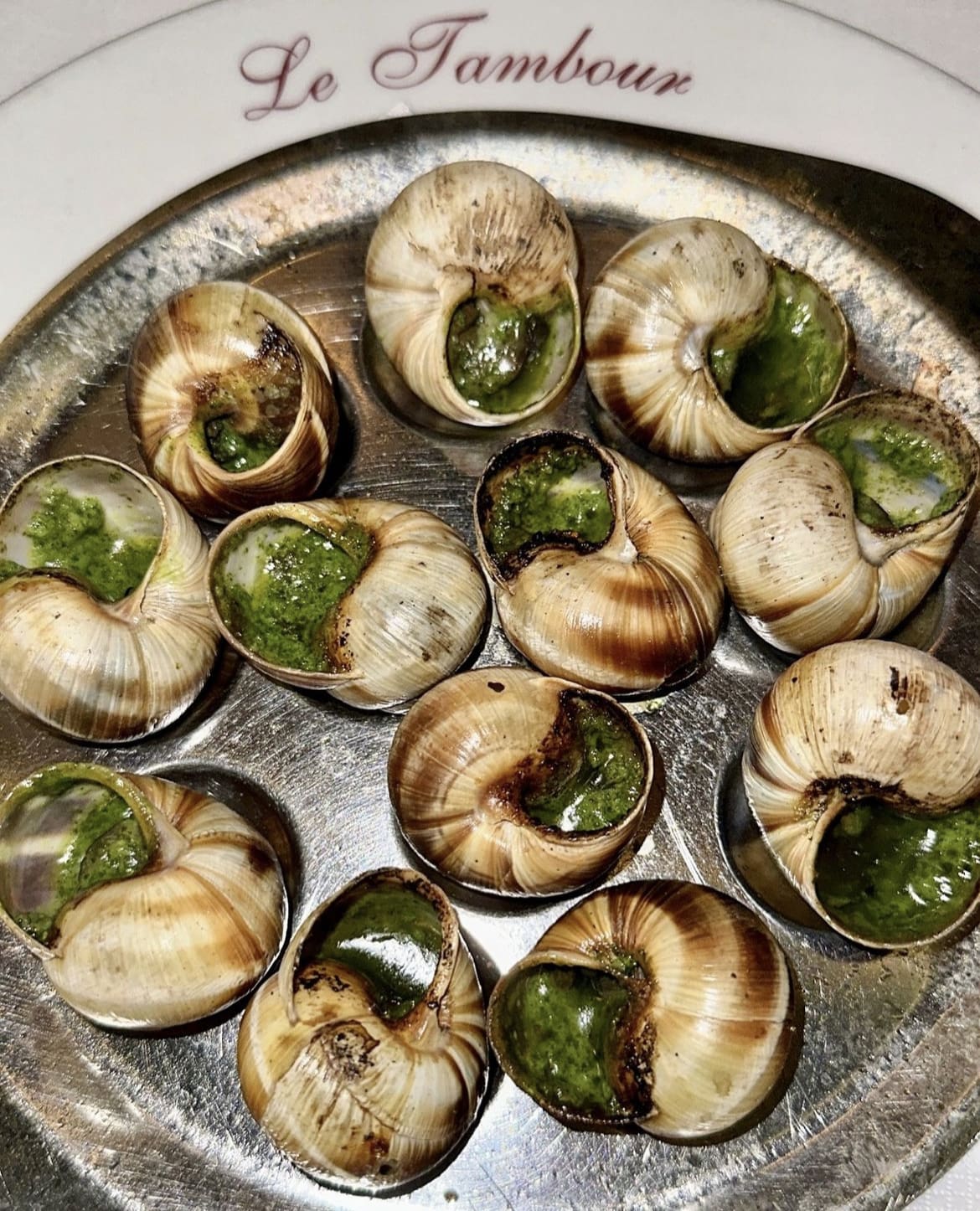
Must-Visit French Restaurants Known for Snail Dishes
For those who want to experience authentic French food with snails right at the source, there are several renowned restaurants across France that specialize in this delicacy. Here’s a guide to some must-visit spots where you can enjoy escargot prepared by the best in the business:
L’Escargot Montorgueil, Paris: Nestled in the heart of Paris, this historic restaurant has been serving snail dishes since 1832. It offers a range of escargot options, from the classic garlic and parsley to more adventurous flavors like Roquefort cheese and curry sauce. The charming décor and lively atmosphere make it a beloved destination for both locals and tourists.
La Maison de l’Escargot, Paris: Dedicated entirely to snails, La Maison de l’Escargot is the go-to spot for snail aficionados. Here, you can try different varieties of snails and learn about the preparation techniques from experts. It’s a unique culinary experience that delves deep into the tradition of heliciculture.
Chez Léon, Lyon: Lyon, often considered the gastronomic capital of France, is home to Chez Léon, where snails are served with a touch of local flavor. The snails here are often paired with Beaujolais, a light red wine from the nearby vineyards, which complements the richness of the dishes perfectly.
Le Pantruche, Nice: For those visiting the French Riviera, Le Pantruche offers a Mediterranean twist on traditional snail recipes. Their snail dish with herbed butter and a splash of pastis, an anise-flavored spirit, reflects the sunny flavors of the south.

Cultural Significance and Misconceptions About Eating Snails
Snails are a staple in French cuisine and carry with them a significant cultural heritage, yet they often provoke a spectrum of reactions from intrigue to hesitation among the uninitiated. Understanding the cultural importance and clearing up common misconceptions can enhance appreciation for this unique delicacy.
Cultural Significance: In France, snails are more than just food; they are a symbol of French gastronomic tradition. Historically associated with luxury and fine dining, snails have been enjoyed by French royalty and nobility since the Middle Ages. Today, they are celebrated during festivals and special occasions, emphasizing their role in French culinary arts. The tradition of eating snails represents a deep appreciation for regional ingredients and time-honored cooking methods, reflecting the French ethos of ‘terroir’—the belief that the land’s unique characteristics are embodied in its produce.
Common Misconceptions:
- “Snails are slimy and tasteless”: Many hesitate to try snails, assuming they will be slimy or lack flavor. In reality, when cooked properly, snails have a texture akin to mushrooms and are rich in umami flavors, especially when prepared with butter, garlic, and herbs.
- “Snails are only for the adventurous eater”: While snails might seem exotic, they are a gateway to French cuisine’s rich diversity and are as enjoyable as any other seafood or gourmet meat.
- “Snails lack nutritional value”: Contrary to this belief, snails are highly nutritious, packed with protein, low in fat, and a good source of essential minerals like iron, calcium, and magnesium.
Our culinary journey through the world of French food with snails has taken us from the historic tables of ancient French nobility to the innovative plates of today’s top chefs. We’ve explored the traditional recipes that have made snails a beloved staple in French cuisine and delved into the modern twists that keep the tradition alive and exciting. From the rustic charm of Escargot à la Bourguignonne to the creative flair of snail tartlets with blue cheese, the versatility and depth of this humble mollusk have been showcased in full.
STAY UPDATED
Join our community of keen travellers, wildlife enthusiasts and adventure seekers.
Where To Find The Best Cheesesteak In Philadelphia
April 23, 2024
Ever wondered why Philly cheesesteaks have their own cult following? It's not just a sandwich; it's a culinary battle royale set in the heart of Philadelphia, a city as famed for its edgy character as it is for its deep-rooted American history. In this Insider's guide, we're diving knife-first into the greasy, cheesy world of Philly's pride and joy.
Whether you’re a first-timer curious about the hype or a seasoned local looking to rediscover your city’s savory icon, we've got the lowdown on where to find the best cheesesteaks.
Prepare to embark on a flavor journey where you'll learn not just where to eat, but what makes these spots stand out in a city brimming with contenders.
History Of The Philly Cheesesteak
The story of the cheesesteak is as deliciously rich as the sandwich itself. Born during the 1930s in the bustling working-class neighborhoods of Philadelphia, the cheesesteak was the brainchild of Pat Olivieri, a hot dog vendor who decided to throw some beef on his grill and stuff it into an Italian roll.
Little did he know, he was about to create a local legend. Word of mouth spread like wildfire, and soon, Pat opened up Pat’s King of Steaks, which still serves up cheesesteaks to hungry crowds today.
From its simple beginnings, the cheesesteak quickly became embedded in Philadelphia’s cultural fabric. It wasn't just about the steak and cheese; it was a symbol of Philadelphia itself—unpretentious, straightforward, and a bit rough around the edges. As the city evolved, so did its favorite sandwich, seeing variations in cheese choices and toppings, each claiming to be the new classic.
What Makes a Perfect Philly Cheesesteak?
At its core, a Philly cheesesteak is deceptively simple, yet every element is crucial. The soul of the sandwich is the thinly sliced rib-eye or top round steak, sizzled to tender perfection. It's all about the meat's quality and the skill in chopping it finely on the griddle as it cooks, blending seamlessly with the chosen cheese. Speaking of cheese, you’ve got options—Cheez Whiz, which melts beautifully into the meat, is the classic choice for a reason. However, Provolone and American cheese have their loyalists, offering a slightly different, but equally delicious, taste profile.
The roll is the unsung hero of the cheesesteak. A good cheesesteak roll needs to be sturdy enough to hold together under the weight of the meat and cheese but soft enough to bite through easily. It should have a slight chewiness, a fresh, slightly yeasty sweetness, and just enough crust. Local bakeries like Amoroso's have been perfecting this balance for years, making their rolls a favorite among top cheesesteak shops.
Cultural Significance
The cheesesteak isn’t just food; it’s a piece of Philadelphia’s identity, akin to the Liberty Bell or the steps of the Art Museum. It speaks to the city's blue-collar roots, a straightforward dish for a hardworking populace.
It’s democratic, too; everyone eats cheesesteaks in Philly—from taxi drivers and doctors to tourists and tech start-ups. Every cheesesteak eaten is a nod to the city’s history and a thumb in the eye to more pretentious, less hearty foods.

Where to Find the Best Cheesesteaks in Philadelphia
1. Pat’s King of Steaks
If there’s a starting line in the race for the title of Philly’s cheesesteak king, it’s at Pat’s King of Steaks. As the reputed birthplace of the cheesesteak, Pat’s has been serving up these iconic sandwiches since the 1930s, claiming the hearts and appetites of locals and visitors alike.
Located at the intersection of 9th Street and Passyunk Avenue in South Philly, this eatery has an aura of authenticity that’s hard to beat.
What Makes Pat’s Special
Pat’s stakes its claim to fame with a straightforward, no-frills approach to the cheesesteak. The magic happens on their well-seasoned grill, visible to anyone in line, where rib-eye steaks are thinly sliced, then chopped and flipped until perfectly cooked. The traditional choice of cheese here is Cheez Whiz, generously slathered onto a freshly baked Amoroso roll. Pat’s mantra is simplicity, letting each component speak for itself without overwhelming gimmicks.
The setting of Pat’s adds to its charm. It’s a stand-up, outdoor venue with a canopy of street lights and the ever-present hum of the city. It’s common to see a line of eager patrons at almost any hour, giving it a communal, almost festival-like atmosphere. It's not just about grabbing a quick bite; it's about experiencing a piece of Philadelphia culture.

According to local lore, visiting Pat’s is like taking a step back in time. Frankie, a regular since the late '90s, shares, “Every time you bite into a Pat’s cheesesteak, it’s like the whole city is right there with you. You got the hustle, the bustle, and a bit of grease—just the way life here feels. And man, once you’ve had your sandwich, nothing else hits the spot quite the same way again.”
Pat’s King of Steaks is more than just a restaurant; it’s a landmark. Whether it’s your first visit or your fiftieth, the experience is quintessentially Philadelphian—unpretentious, filling, and remarkably unforgettable. As you continue your cheesesteak tour, keep the benchmark set by Pat’s in mind, because every contender has something unique up their sleeve in this city’s ongoing cheesesteak saga.
2. Geno's Steaks
Directly across the street from Pat's, you'll find Geno's Steaks, another heavyweight in the Philly cheesesteak scene. Founded in 1966 by Joey Vento, Geno's has been dishing out rival cheesesteaks under the glow of its neon facade, creating a friendly competition that has become almost as iconic as the sandwich itself.
The rivalry between Pat’s and Geno’s is one of Philadelphia's most talked-about tourist attractions, turning the corner of 9th and Passyunk into a veritable cheesesteak battleground.
What Makes Geno's Special
Geno’s approach to the classic Philly cheesesteak mirrors its vibrant, flashy exterior—bold and unapologetic. They stick to the traditional recipe but emphasize the quality and cut of their meat, which is always served fresh and never frozen. At Geno's, the cheese options include Provolone, American, and yes, Cheez Whiz, each adding a distinct flavor profile to the sandwich. What sets Geno's apart is their finely chopped, rather than sliced, steak, which offers a different texture and a more integrated blend of meat and cheese.
The ambiance at Geno’s is unmistakably Philadelphian. Neon lights illuminate the stand and the street around it, creating a spectacle that's as much a feast for the eyes as the cheesesteaks are for the stomach. The ordering window, plastered with photos of celebrities who have visited, and the clear, simple menu overhead, make choosing your meal an event in itself.

Maria, a Philadelphia native and frequent visitor to both Geno’s and Pat’s, comments on the experience: “It’s not just about the food, which is fantastic by the way, but it’s the whole atmosphere. Night or day, there’s an energy here. You feel like you’re a part of something bigger—a decades-long debate about who does it better. And let’s be honest, it’s a delicious debate to participate in.”
Visiting Geno’s is not only about savoring a top-tier cheesesteak; it’s about immersing yourself in a piece of Philadelphia’s vibrant, neon-lit night culture. The experience of eating at Geno’s—amidst the buzz of competition, surrounded by history and under the watchful eyes of Philly’s cheesesteak legends—adds an extra layer of excitement to the culinary adventure.
3. Dalessandro’s Steaks
A bit off the beaten path, but no less renowned among locals, is Dalessandro’s Steaks. Located in the Roxborough neighborhood of Philadelphia, Dalessandro’s has been mastering the art of the cheesesteak for over half a century.
This spot has garnered a cult following among cheesesteak aficionados for its consistent quality and slightly different approach to the city’s signature sandwich.
What Makes Dalessandro’s Special
Dalessandro’s stands out for several reasons, not least of which is its approach to preparing the steak. Unlike the more famous downtown spots, Dalessandro's chops its meat into finer pieces, which some argue allows for a more even distribution of flavors and textures. They also pile their sandwiches high with toppings, offering a generous portion of sautéed onions, peppers, and mushrooms, if desired. The cheese—whether you opt for American, Provolone, or Whiz—melts into the crevices of the finely chopped steak, creating a gooey, flavorful blend that permeates every bite.
The shop itself is small and unassuming, with a straightforward, no-frills counter where orders are shouted over the sizzle of the grill. The atmosphere is quintessentially local. Regulars greet each other by name, and newcomers are quickly drawn into conversations, making everyone feel like part of the community.

Jeff, a lifelong resident of Roxborough and a regular at Dalessandro’s, shares his thoughts: “What I love about Dalessandro’s isn’t just the cheesesteaks, which are by far some of the best you’ll find anywhere—it’s the feeling of community here. It’s like this little hub in the neighborhood where everyone comes together. You come for the steak and stay for the stories.”
Visiting Dalessandro’s offers more than just a meal; it’s a dive into a vibrant local scene. It’s where you go to see the real Philadelphia, away from the tourist paths, and into the heart of one of its lively neighborhoods. Here, the cheesesteak is not just a quick bite; it's a reason for gathering, chatting, and enjoying the company of fellow Philadelphians.
4. Jim’s Steaks South Street
Another essential stop in your Philadelphia cheesesteak tour is Jim’s Steaks on South Street, a locale that combines the rich flavor of tradition with the vibrant pulse of one of Philly’s most eclectic neighborhoods.
Since opening in 1939, Jim’s has earned a reputation not only for its stellar cheesesteaks but also for its role as a cultural landmark on the ever-bustling South Street.
What Makes Jim’s Special
Jim’s Steaks stands out with its meticulous preparation and dedication to quality. The meat, always fresh and sliced in-house, is seared on a griddle that has seasoned countless batches of Philly’s favorite sandwich. The steaks are then loaded onto freshly baked rolls and dressed with your choice of cheese—American, Provolone, or the quintessential Cheez Whiz. What truly sets Jim’s apart is their technique of layering the cheese both below and on top of the steak, ensuring every bite is infused with cheesy goodness.
The ambiance at Jim’s on South Street is as flavorful as the sandwiches it serves. The walls are adorned with photos of celebrities and athletes who have stopped by to get their fix, echoing the shop’s storied past and its continued appeal. The vibe is lively and loud, a reflection of South Street’s dynamic character, known for its mix of music venues, boutiques, and tattoo parlors.

Samantha, a frequent visitor, describes her experience: “There’s something about Jim’s that just feels incredibly Philly. It’s not just the cheesesteaks, which are absolutely to die for, but also the whole atmosphere. South Street has this unique vibe, and Jim’s is like the heart of it. You hear music from the street performers outside, see all kinds of people, and there’s always a line, but it’s worth the wait.”
Visiting Jim’s Steaks on South Street is more than a dining experience; it’s a plunge into the cultural melting pot that is Philadelphia. Whether it’s late at night after a concert or on a sunny afternoon stroll, Jim’s provides not just a meal but a slice of city life.
5. John’s Roast Pork
Nestled in the less-touristed neighborhood of South Philadelphia, John's Roast Pork may be slightly off the typical culinary radar for cheesesteaks, but it’s a spot that connoisseurs and locals swear by.
Known primarily for its award-winning roast pork sandwiches, John's also crafts a cheesesteak that many argue rivals—if not surpasses—those found at the more famous establishments. This family-owned business, operating since 1930, offers a cheesesteak experience steeped in tradition and local flavor.
What Makes John’s Roast Pork Special
John’s differentiates itself with a focus on quality and freshness, not just in its famed roast pork but also in its cheesesteaks. They use high-quality, thinly sliced steak and sharp provolone, a choice that offers a tangy depth to the sandwich. What truly sets John’s apart, however, is their bread—a crusty seeded roll that perfectly balances the juiciness of the meat and the melt of the cheese. This combination of high-quality ingredients and the unique roll makes each bite a complex and satisfying experience.
The setup at John’s is simple and unassuming. The small, standalone shack with a tiny dining area and a few outdoor tables focuses on what matters most—the food. Here, the approach is straightforward: great ingredients, made to order, no fuss, no frills.

Danny, a Philadelphia native and longtime patron of John’s, shares his thoughts: “John’s might not be the first name that comes to mind when you think of Philly cheesesteaks, but it’s definitely one of the best. The roll they use, those sesame seeds, it just adds something special you can’t get anywhere else. And the atmosphere is just pure Philly—it's about the community, about sticking to what you're good at.”
Visiting John’s Roast Pork offers an authentic slice of Philadelphia life. It’s where you go to see the heart of the city’s culinary craftsmanship, where every sandwich serves as a reminder of the city’s unpretentious, hard-working spirit.
Tips For Finding The Best Cheesesteak in Philly
Embarking on a cheesesteak tour of Philadelphia isn't just about indulging in some of the best sandwiches the city has to offer; it’s also about navigating the nuances of a true Philly experience. Here are some practical tips to help you make the most of your cheesesteak adventures.
Best Times to Visit
Timing can be everything when it comes to avoiding long lines at popular spots like Pat’s, Geno’s, and Jim’s. Early lunchtime, around 11 AM, or late afternoon, before the dinner rush, tend to be the best times to grab a cheesesteak without a lengthy wait. However, if you’re visiting a place like Geno’s or Pat’s, a late-night visit can be an unforgettable part of the Philly nightlife experience, albeit with a bit of a crowd.
Costings
The cost of a cheesesteak in Philadelphia can vary. Generally, prices range from $10 to $15 depending on the location and the toppings you choose. While most places accept credit cards these days, some old-school spots might only take cash, so it’s wise to have some on hand.
Travel Tips
Getting around Philadelphia to sample the best cheesesteaks is part of the adventure. If you’re focusing on downtown locations like Pat’s and Geno’s, public transportation is convenient; both the bus and subway lines service the area well. For spots like Dalessandro’s and John’s Roast Pork, having a car might be beneficial, as these are a bit out of the way. However, parking can be tricky, especially in busier areas, so be prepared to look for a spot or pay for parking.
Survival Tips
Ordering a cheesesteak in Philly comes with its own set of rules. To order like a local, specify your cheese choice and whether you want onions by using the lingo; for example, “Whiz with” means you want Cheez Whiz and onions, while “Provi without” means Provolone cheese without onions. It's a quick, efficient way to communicate your order, keeping the line moving and earning you a nod of approval from the locals.
Understanding the etiquette at each location can also enhance your visit. For instance, many cheesesteak shops have a fast-moving line, and it’s expected that you know what you want by the time you reach the counter. Take a moment to watch others as you approach the front of the line to get a feel for the process.

Beyond the Bun – What Else to Do in Philly
After you’ve savored the cheesy goodness of Philly’s finest cheesesteaks, don’t miss out on the plethora of other experiences this vibrant city has to offer. Combining your culinary adventure with other Philadelphia attractions can round out your visit, making it not just a taste exploration but a deep dive into the city's rich history and vibrant culture.
Combining Cultures
Start at the Liberty Bell and Independence Hall, where America’s foundational stories come to life, just a short distance from the cheesesteak epicenters of South Philly. Explore the Philadelphia Museum of Art—not just for its vast collections but also for the iconic Rocky steps out front.
For a taste of something different, stroll through the Italian Market, the oldest and largest working outdoor market in the United States, offering an array of foods, spices, and local products that reflect Philadelphia’s multicultural heritage.
Neighborhood Guide
Philadelphia is a city of neighborhoods, each with its own distinct flavor. Beyond the cheesesteak hubs, venture into Fishtown for a taste of the city’s burgeoning craft beer scene, or head to Rittenhouse Square to browse high-end boutiques and enjoy a leisurely coffee at one of the many chic cafés.
Each neighborhood offers its unique vibe and charm, providing a broader sense of what Philadelphia is all about.
Local Events
Depending on the time of year, Philadelphia’s calendar is packed with events and festivals that showcase its dynamic cultural scene. From the vibrant Mummers Parade on New Year’s Day to the Philadelphia Film Festival in the fall, there’s always something happening. Summer brings outdoor concerts and food festivals, while the winter holiday market and ice skating at Dilworth Park provide festive cheer.
The 10 Most Famous Restaurants in Paris, France
April 17, 2024
Paris—City of Lights and Culinary Delights
Paris isn’t just about the twinkling lights of the Eiffel Tower or the romantic allure of sunset boat rides on the Seine. It’s a global powerhouse of fashion, art, and above all, gastronomy. Paris is a city where every alley and avenue whispers stories, and its bistros and brasseries sing the chorus.
The Parisian culinary scene is a vibrant celebration of past and present, traditional flavors melding with innovative techniques. This guide dives into the heart of Paris's culinary scene, uncovering the most famous restaurants where every dish tells a story, and every bite is a memory in the making.
So lace up your walking shoes and bring your appetite—we’re about to embark on a journey through the most iconic eateries in the City of Lights.
1. Le Jules Verne: Dining in the Parisian Sky
Perched high above the city on the second floor of the Eiffel Tower, Le Jules Verne offers more than just a meal; it delivers an unforgettable experience. With its sophisticated vibe and panoramic views of Paris, dining here feels like being in a moving postcard.
As soon as you step off the private elevator, you're greeted by an elegantly appointed space and a menu that blends tradition with contemporary innovation. The setting is perfect for those who appreciate the finer things in life. Signature dishes like the sea bass with caviar and the chocolate soufflé are meticulously crafted to match the grandeur of their surroundings.
If you’re planning a visit, dress to impress and make reservations well in advance. Le Jules Verne isn’t just a meal; it's a tick on the bucket list of culinary enthusiasts worldwide.

2. L'Ambroisie: A Symphony of Classic French Elegance
Nestled in the picturesque Place des Vosges, L'Ambroisie is the epitome of classic French luxury. The restaurant's opulent interior, complete with lush fabrics and intricate table settings, sets the stage for an extraordinary dining experience.
This Michelin-starred haven is celebrated for its commitment to perfection and classic culinary techniques. The menu, created by Chef Bernard Pacaud, features timeless dishes that emphasize purity and flavor, such as the langoustines with curry and the tart of warm chocolate and candied raspberries.
L'Ambroisie is a sanctuary for those who seek to savor meticulously crafted French cuisine in a setting that whispers of bygone regality. Remember, this level of dining requires forethought—reservations are essential, and there's an expected dress code that complements the restaurant's refined atmosphere.
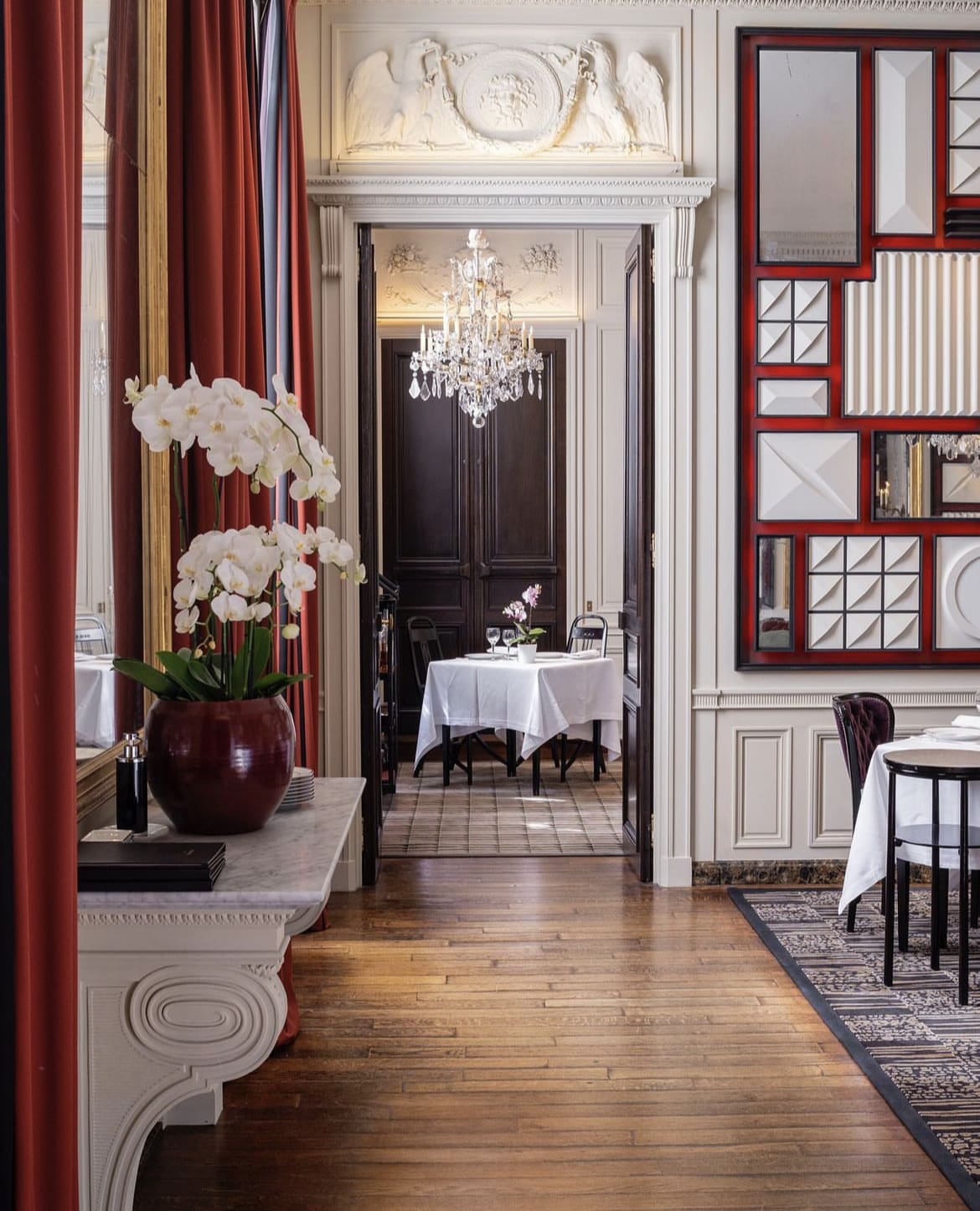
3. Septime: A Modern Bistro That’s Reshaping Parisian Cuisine
In the 11th arrondissement, a district renowned for its dynamic culinary scene, Septime stands out as a beacon of modern gastronomy. The brainchild of chef Bertrand Grébaut, Septime offers a relaxed yet refined bistro atmosphere, where the decor's rustic touches and industrial chic vibe blend seamlessly.
This Michelin-starred establishment is celebrated for its commitment to sustainability and its innovative approach to French cuisine. The menu is a testament to creativity, featuring seasonal ingredients transformed into exquisite dishes that delight the senses. Highlights include the perfectly cooked line-caught fish accompanied by fresh vegetables and inventive sauces.
Septime is not just a meal; it's an exploration of contemporary flavors that push boundaries while respecting the earth. Bookings are tough to snag but worth the effort for those who appreciate a culinary experience that is as thoughtful as it is delicious.
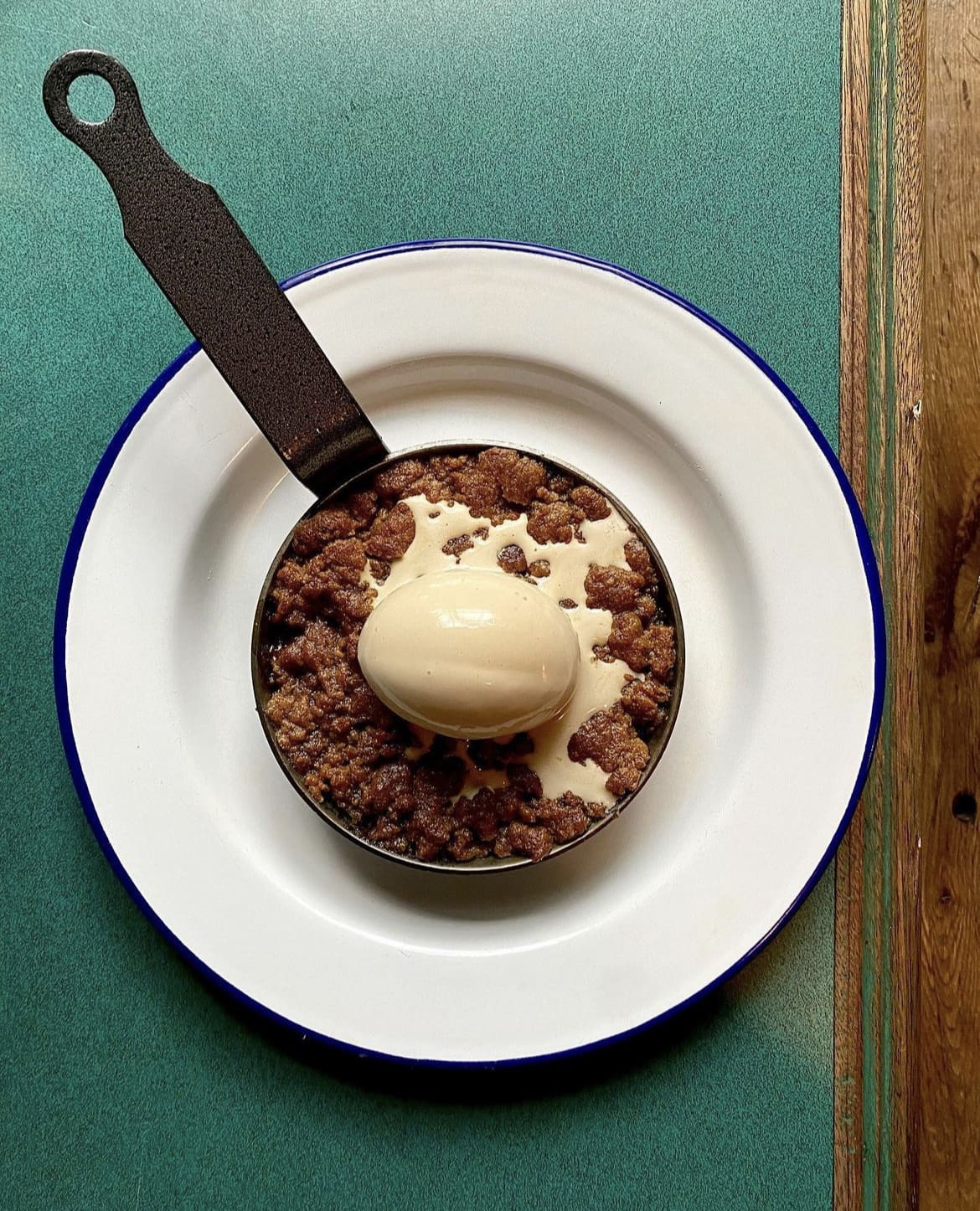
4. Pierre Gagnaire: The Art of Culinary Innovation
Steps away from the bustling Champs-Elysées lies Pierre Gagnaire, a restaurant synonymous with the revolution of French cooking. Chef Gagnaire's eponymous eatery is a shrine to the artistry of cuisine, where each dish serves as a canvas for his avant-garde approach.
The intimate setting provides a backdrop for a culinary journey that is both intimate and exhilarating. The menu is an ever-evolving landscape of complex flavors and textures, with dishes like the foie gras terrine with lychee and rose, showcasing Gagnaire's flair for unexpected combinations that work in harmony.
This restaurant is a pilgrimage site for those devoted to the sensory pleasures of innovative dining. Visitors should dress elegantly and prepare for an unforgettable experience that challenges their taste buds and expands their culinary horizons.
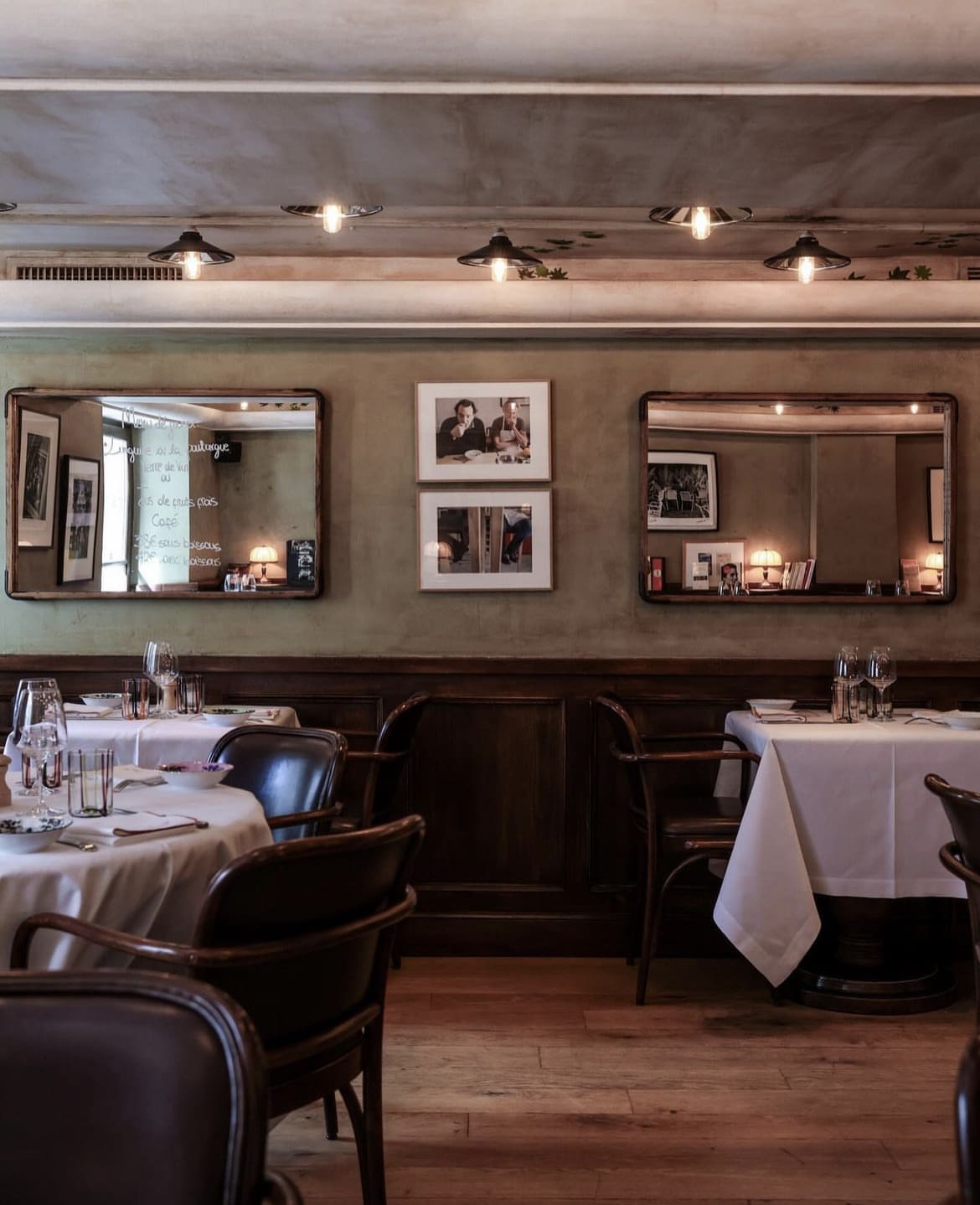
5. Le Meurice: Dining Like Royalty
Inside the historic Hotel Le Meurice, facing the picturesque Tuileries Garden, Le Meurice restaurant offers a dining experience that transcends the ordinary. Under the direction of world-renowned chefs, the restaurant embodies the essence of opulent Parisian dining.
The decor, inspired by the Salon de la Paix at Versailles, features ornate chandeliers and fine frescoes, creating a setting fit for royalty. The menu at Le Meurice is a celebration of French culinary art, emphasizing precision and seasonality. Signature dishes such as the truffle-stuffed chicken cooked in a pig's bladder epitomize luxury and tradition.
Guests are advised to embrace the full regal experience by adhering to the formal dress code, making reservations well in advance, and perhaps, timing their visit to catch the special tasting menus which showcase the pinnacle of the chef’s creativity.
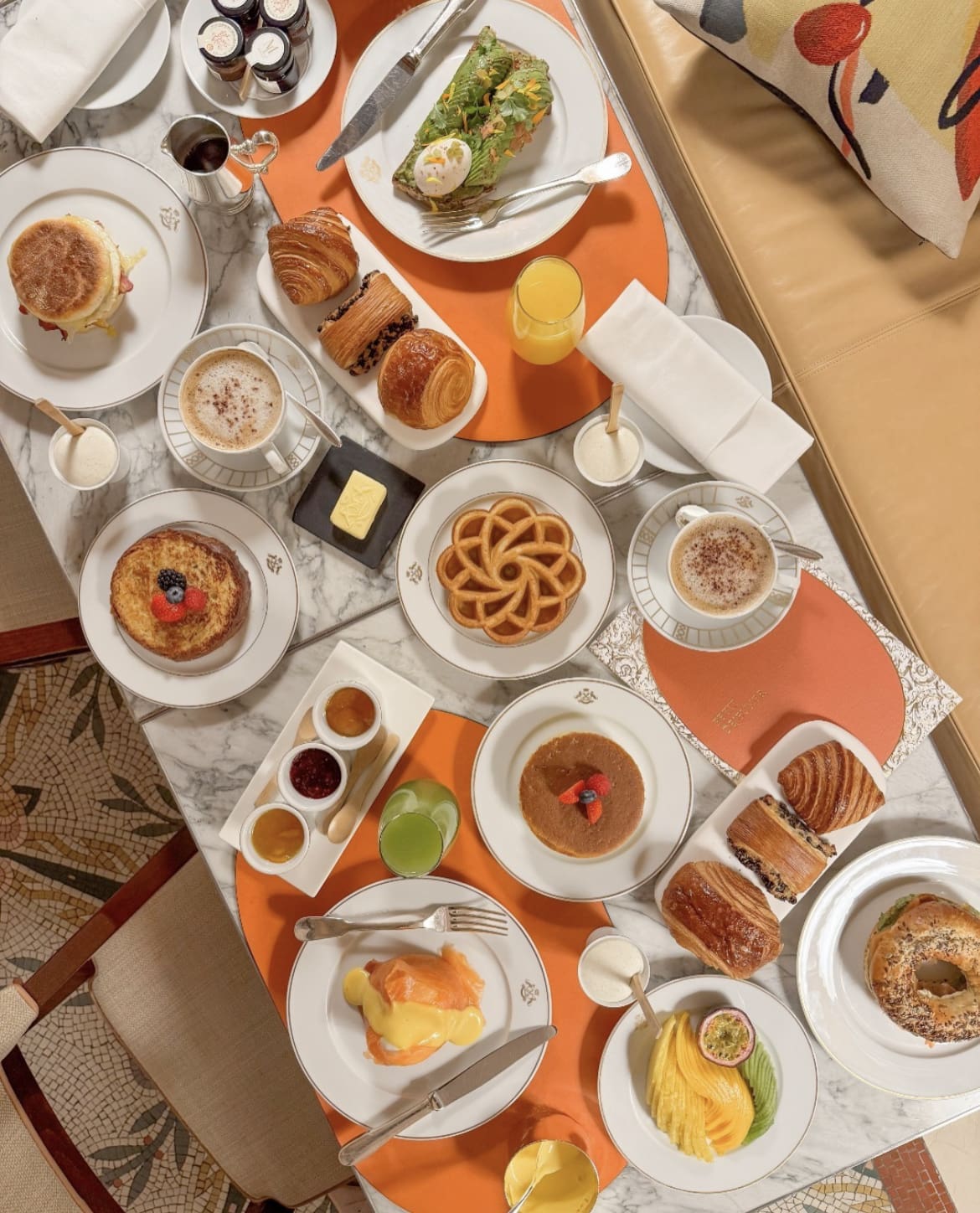
6. Guy Savoy: Where Gastronomy Meets Perfection
Nestled near the historic Monnaie de Paris, Restaurant Guy Savoy is more than a dining destination; it's an institution that celebrates the purity of flavors and the heights of French gastronomy. The ambiance here is one of understated elegance, designed to let the food speak for itself.
Chef Guy Savoy has crafted a menu that is both inventive and respectful of classical techniques, with dishes such as his iconic artichoke and black truffle soup, topped with a mushroom brioche, becoming almost legendary among culinary aficionados. Dining at Guy Savoy is akin to attending a master class in French cuisine, where each course builds upon the last to create a crescendo of flavors.
The service is impeccable, reflecting Savoy’s philosophy that “the guest is the center of the universe.” Guests should come prepared for an evening of culinary excellence that demands leisurely appreciation and a smart dress code.
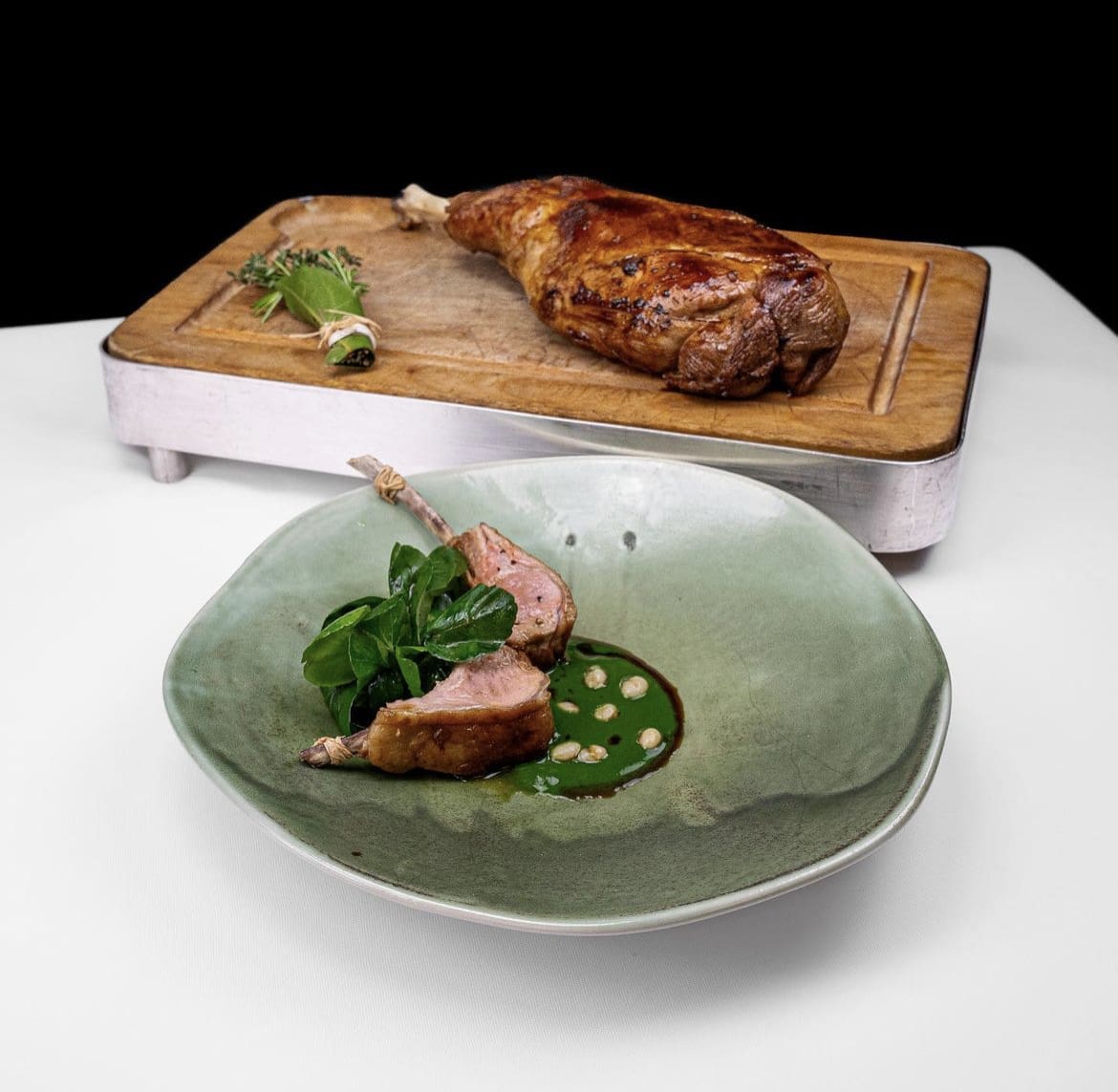
7. L'Atelier de Joël Robuchon Etoile: Interactive Culinary Theatre
Located near the prestigious Champs-Elysées, L'Atelier de Joël Robuchon Etoile is a stage where cuisine becomes performance art. The distinctive setup with counter seating allows diners to observe the culinary team meticulously crafting dishes right before their eyes, turning each meal into an interactive spectacle.
The decor is sleek and modern, with black and red tones providing a dramatic backdrop for the vibrant culinary artistry. Chef Robuchon's philosophy of "accessible luxury" shines through in his menu, which features refined dishes designed to highlight the intrinsic flavors of top-quality ingredients.
Signature offerings such as the velvety mashed potatoes, which have become synonymous with Robuchon’s name, or the tantalizingly fresh langoustine preparations, are must-tries. Reservations are highly recommended as the intimate seating fills quickly, especially given the restaurant's popularity among both tourists and locals.
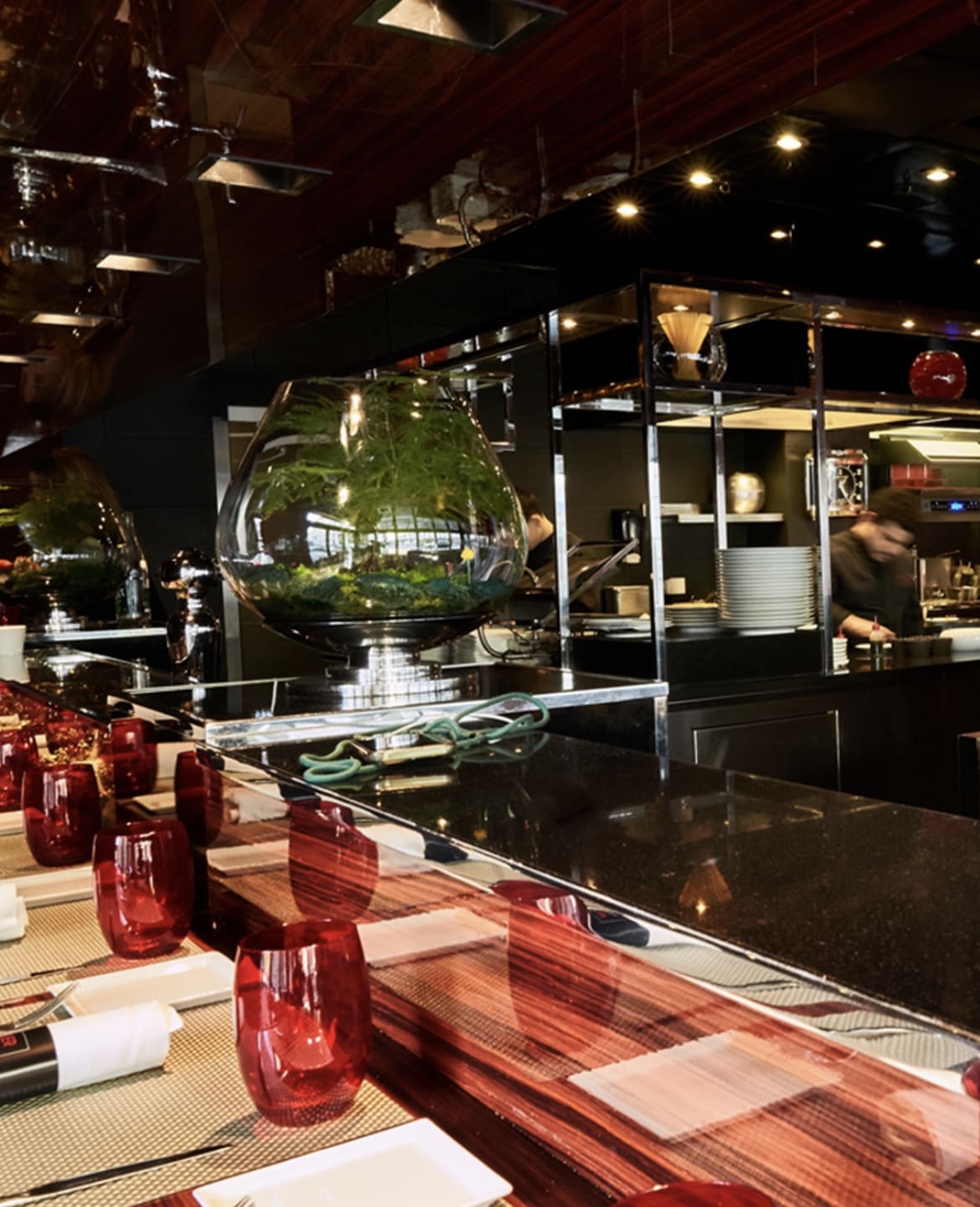
8. La Tour d'Argent: A Historic Feast with a View
Overlooking the Seine and with a stunning view of Notre-Dame, La Tour d'Argent is not just a restaurant; it's a piece of Parisian history. This legendary establishment has been serving patrons since 1582, and dining here is like taking a step back in time.
The restaurant is famed for its pressed duck, numbered and presented with a certificate—a tradition that dates back centuries. The dining room, adorned with antique silverware and fine linens, evokes an era of grandeur and elegance.
Beyond the historic duck, the menu offers a range of classic French dishes, each prepared with the precision and flair that befit such a storied location.
Guests are encouraged to dress formally to match the restaurant’s classic decor and to allow plenty of time to savor the experience, perhaps beginning with an aperitif by the window to fully appreciate the breathtaking views of the Paris skyline.

9. Le Chateaubriand: The Cool Kid of Parisian Cuisine
In the vibrant neighborhood of the 11th arrondissement, Le Chateaubriand redefines what it means to dine in Paris. This bistro, led by chef Iñaki Aizpitarte, is known for its relaxed atmosphere and a revolutionary approach to French cuisine that has captured the attention of the global food scene.
The decor is minimalistic and unpretentious, creating an inviting space where the food takes center stage. The menu is a daily surprise, eschewing traditional à la carte options for a prix fixe that keeps diners on the edges of their seats.
Expect bold flavors and dishes that blend French techniques with global influences, such as smoked eel with hazelnut butter or seared scallops with seasonal wild herbs. The vibe is decidedly young and edgy, making it a favorite among foodies who crave something out of the ordinary. Reservations are a must here, as its reputation makes it one of the most sought-after tables in Paris.
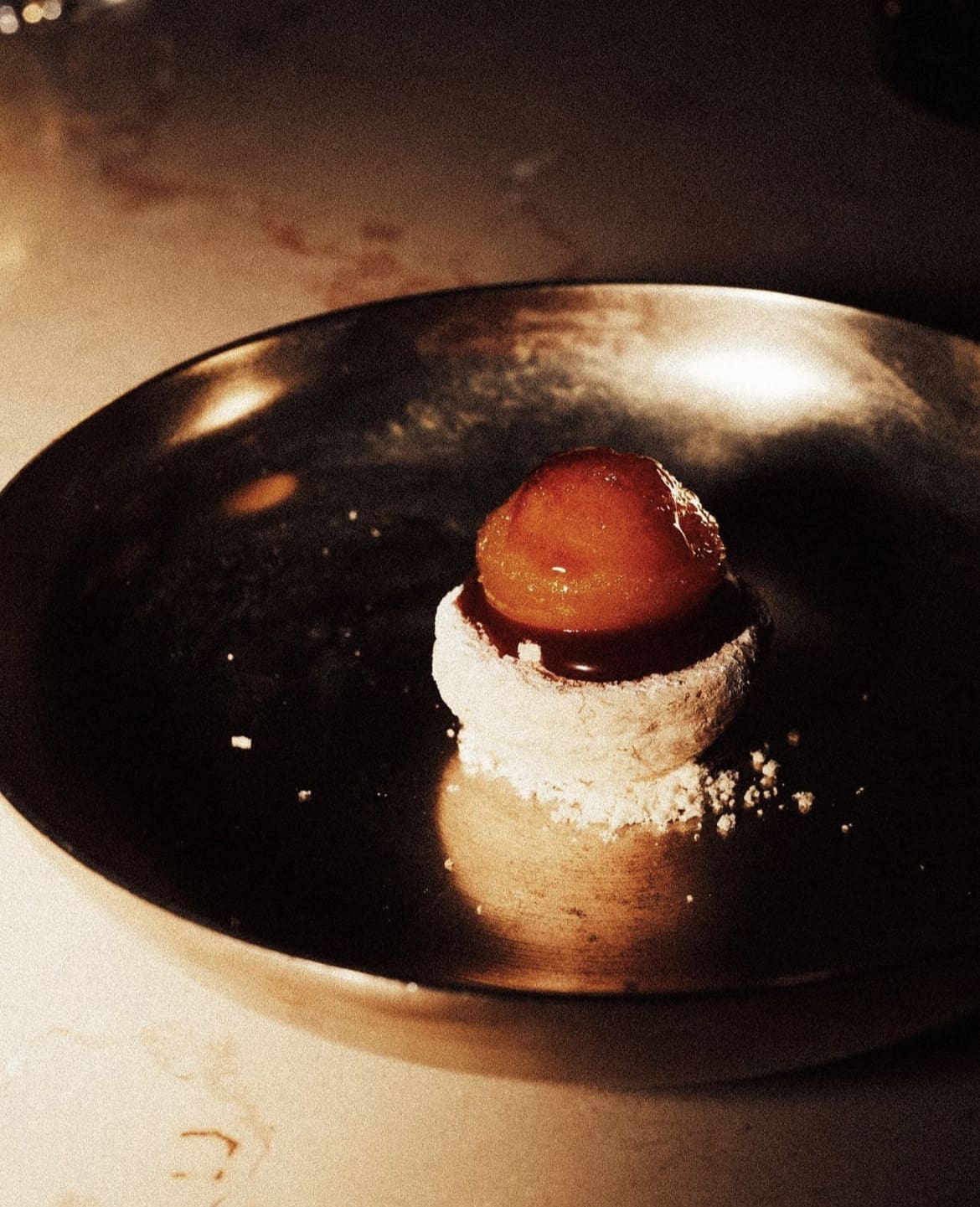
10. Alain Ducasse au Plaza Athénée: The Pinnacle of Naturalness
The experience at Alain Ducasse au Plaza Athénée is nothing short of spectacular, where the philosophy of naturalness governs every aspect of the dining experience. Located in the prestigious Hotel Plaza Athénée, this restaurant offers a stunningly modern and elegant setting designed by Patrick Jouin and Sanjit Manku.
The menu focuses on the essentials of fish, vegetables, and cereals, presented with an unparalleled level of creativity and care. Signature dishes might include marinated sea bream with caviar or guinea fowl with truffle-stuffed cabbage, each dish reflecting a commitment to sustainable and health-conscious dining.
The atmosphere is sophisticated yet welcoming, encouraging diners to indulge in a culinary exploration that is as thoughtful as it is delicious. Dress elegantly and prepare for a dining experience that seeks to not only entertain but also enlighten.
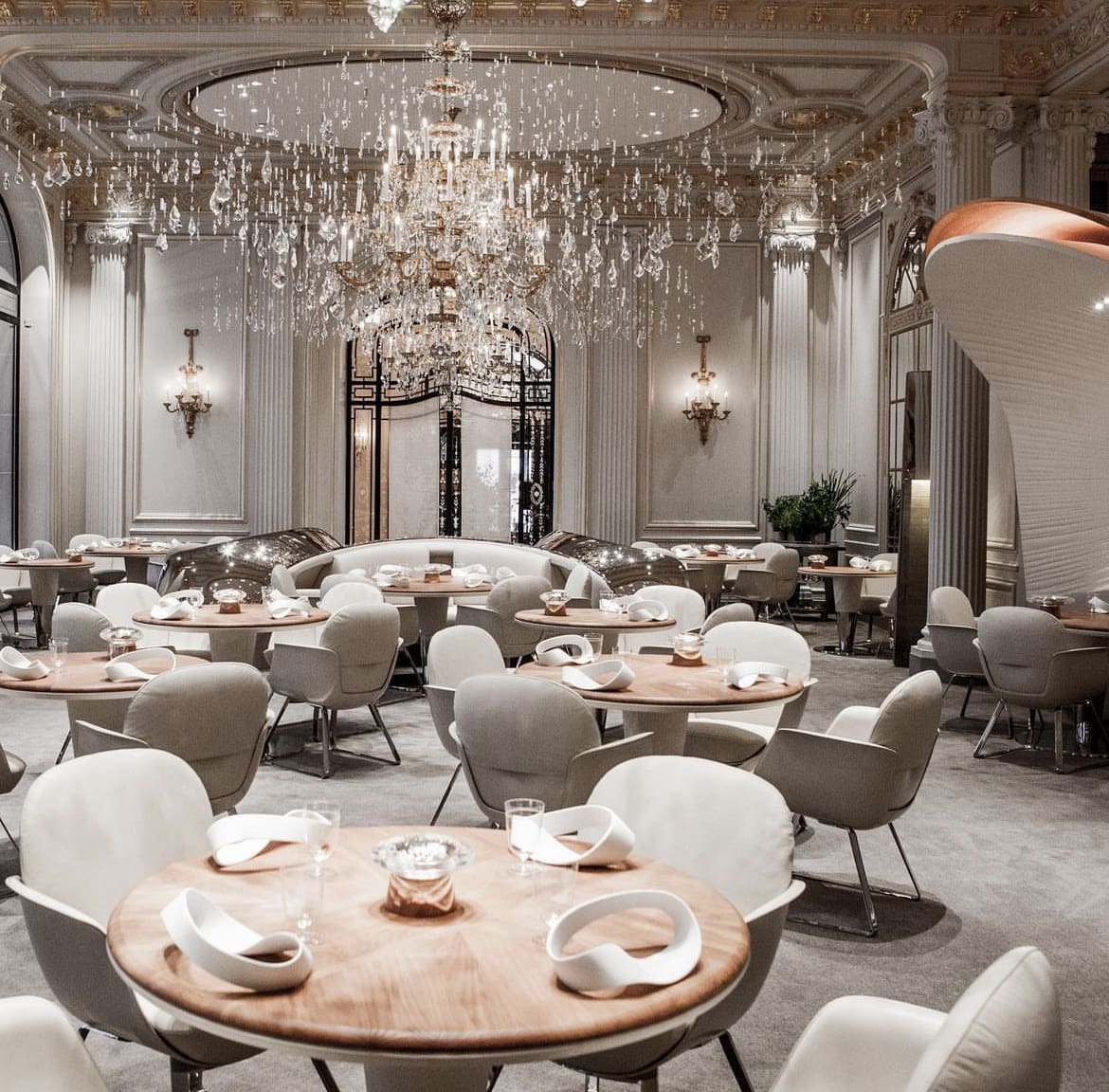
This tour of Paris’s most famous restaurants is more than a mere list of places to eat; it is an invitation to experience the depth and breadth of what this city has to offer. Each restaurant we visited brings its own unique flavor to the table, from the historical legacies of La Tour d'Argent to the innovative approaches of Le Chateaubriand and Alain Ducasse au Plaza Athénée.
Whether you’re seeking the comfort of traditional French cuisine or the thrill of culinary innovation, Paris holds a table ready for you.
So, next time you find yourself wandering the streets of this magnificent city, let your taste buds lead the way to one of these iconic eateries. Each bite not only satisfies the hunger but also deepens the love affair with Paris, a city that continues to captivate and enchant through its remarkable culinary creations. Bon appétit!
The 20 Best Bars In Rotterdam
April 8, 2024
Nestled amidst the cutting-edge architecture and the winding waterways of the Netherlands, Rotterdam stands as a beacon of modernity and resilience. But as the sun dips below its futuristic skyline, the city transforms, revealing an eclectic nightlife that pulses with energy and diversity. Here, in the heart of Rotterdam, you'll find a vibrant urban atmosphere woven from the very fabric of the city's soul - its bars.
From cozy brown cafes where the beer flows as freely as the conversations, to rooftop terraces offering cocktails with panoramic views, Rotterdam's nightlife caters to every whim and fancy. This guide is your key to unlock the 20 best bars in Rotterdam, each a doorway to an unforgettable night out.
1. Nieuw Rotterdams Café (NRC)
In the bustling heart of Rotterdam lies the Nieuw Rotterdams Café, a chic all-rounder that effortlessly transitions from a cozy café by day to a sophisticated cocktail bar by night. NRC's inviting atmosphere is perfect for those who appreciate the finer things in life but in a setting that's both stylish and laid-back.
The bar shines with its selection of craft cocktails, each a masterpiece of balance and flavor, alongside a curated menu of upscale bar food that complements every sip. As night falls, the café's warm lighting and ambient music set the tone for an evening of relaxation and indulgence. Making a reservation is advisable, especially on weekends, to secure a spot in this sought-after venue.
Special event nights, from live jazz to DJ sets, add an extra layer of allure to NRC, making every visit a unique experience.

2. Tiki's Bar
Escape to a tropical paradise right in the heart of Rotterdam at Tiki's Bar & Grill. With its vibrant, exotic décor and a menu brimming with tiki cocktails, Tiki's transports its guests to a sunnier, more colorful world.
The vibe here is unapologetically fun, inviting patrons to shed their inhibitions and embrace the laid-back, island-inspired atmosphere. Signature Mai Tais, served in whimsical, tiki-themed mugs, are the stars of the show, perfectly complemented by a selection of Hawaiian bites that promise to tantalize the taste buds.
Tiki's Bar & Grill is an ideal destination for group hangouts, where the spirit of Aloha encourages shared plates, communal drinks, and stories that last well into the night. Themed party nights, complete with hula dancing and lei-making workshops, ensure that the tropical escapade feels as authentic as it is unforgettable.

3. Witte Aap
Venture into Witte Aap, and you'll find yourself at the pulsating heart of Rotterdam's nightlife. Voted one of the best bars globally, Witte Aap exudes an energy that's both infectious and invigorating. Its doors open to a world where the music is always right, the crowd is eclectic, and the beer selection never disappoints.
This bar's vibrant atmosphere is a magnet for locals and travelers alike, drawn by the promise of a night filled with lively conversations and chance encounters. The selection of local and international beers offers a taste of the world, while live music nights inject an extra dose of vitality into the already buzzing ambiance.
Witte Aap's charm lies in its ability to be many things to many people: a place to unwind after a long day, a stage for up-and-coming bands, or simply a backdrop for a night out with friends. It's a cornerstone of Rotterdam's bar scene, embodying the city's dynamic spirit and open-hearted warmth.

4. Bokaal Rotterdam
Nestled in the bustling Markt area, Bokaal Rotterdam offers an oasis of calm with its spacious outdoor terrace. This bar is a haven for beer and wine aficionados, featuring an impressive selection of Dutch and international brews alongside a fine array of wines. The vibe here is decidedly relaxed, making it the perfect spot to enjoy a sunny afternoon or a balmy evening under the stars.
Bokaal's laid-back atmosphere is complemented by its rustic, yet chic decor, inviting patrons to linger over cheese platters and share stories. It's the quintessential place for those who appreciate the simple pleasures of a good drink and good company.
Aim for off-peak hours if you prefer a quieter experience, and yes, your furry friends are welcome here, making it a favorite among pet owners.

5. Vessel 11 (V11)
Imagine sipping your favorite drink aboard a bright red lightship docked in the heart of Rotterdam. Welcome to Vessel 11, or V11 as it's affectionately known, a quirky bar and restaurant that brings a unique twist to the city's nightlife. This floating gem offers a cozy, intimate setting with its warm, nautical-themed interior and panoramic views of the surrounding water.
V11 is renowned for its selection of British-inspired gastro pub dishes and a range of unique brews, making it a hit among those looking for a distinctive dining and drinking experience.
The laid-back, convivial atmosphere is perfect for those chilly evenings when all you crave is comfort food and good conversation. Don't miss the chance to explore this one-of-a-kind venue, where every visit feels like a mini-adventure at sea.

6. Dr. Rotterdam
Step into Dr. Rotterdam and enter a world of mystery and mixology. This speakeasy-style bar prides itself on its innovative cocktails, crafted with precision and a touch of theatrics by the resident "doctors."
The vibe is intimate and slightly mysterious, with dim lighting and vintage decor that transport patrons back in time. What makes Dr. Rotterdam special is its commitment to the art of cocktail making, with each drink telling a story through its unique blend of flavors. From classic concoctions to avant-garde creations, the menu here is a testament to creativity and craftsmanship.
For those looking for a truly immersive experience, Dr. Rotterdam offers a tantalizing escape into the world of high-end cocktails, where each sip is a discovery.

7. The Suicide Club
Perched atop one of Rotterdam's tallest buildings, The Suicide Club offers an edgy rooftop experience like no other. With stunning panoramic views of the city skyline, this bar combines luxury with a dash of daring.
The atmosphere is chic and sophisticated, appealing to those who enjoy their cocktails with a side of breathtaking vistas. The Suicide Club's menu features a curated selection of drinks and gourmet bites, all designed to impress. Whether you're here to unwind after work or celebrate a special occasion, the club's vibrant ambiance and top-notch service ensure an unforgettable night out.
For the best experience, dress to impress and make a reservation, as this exclusive spot is in high demand among the city's trendsetters.

8. Aloha Bar
Aloha Bar brings a touch of sustainability to Rotterdam's bar scene, set within the whimsical confines of a former tropical swimming paradise. This bar is all about promoting eco-friendly practices, from its use of locally sourced ingredients to its zero-waste philosophy.
The vibe is casual and inviting, with a spacious terrace that overlooks the Maas River, offering a picturesque backdrop for your tropical escapade.
Aloha Bar's menu is a celebration of sustainability, featuring inventive cocktails and vibrant dishes that are as delightful to the palate as they are kind to the planet. It's the perfect spot for those who seek to enjoy a guilt-free night out, embracing the aloha spirit in every aspect of their visit.

9. Hopper Coffee & Craft Beer
For those who believe that coffee and beer are the yin and yang of the drink world, Hopper Coffee & Craft Beer is your nirvana. This bar combines the best of both worlds, offering expertly brewed coffee by day and an impressive selection of craft beers by night.
The vibe is effortlessly cool, with a minimalist decor that emphasizes quality and simplicity. Hopper's commitment to sourcing the finest beans and brews makes it a pilgrimage site for connoisseurs and casual drinkers alike.
Whether you're in the mood for a caffeine kick or a hoppy delight, Hopper ensures your cravings are met with the best the world has to offer. It's a testament to Rotterdam's innovative spirit, serving up a winning combination in an inviting, laid-back setting.
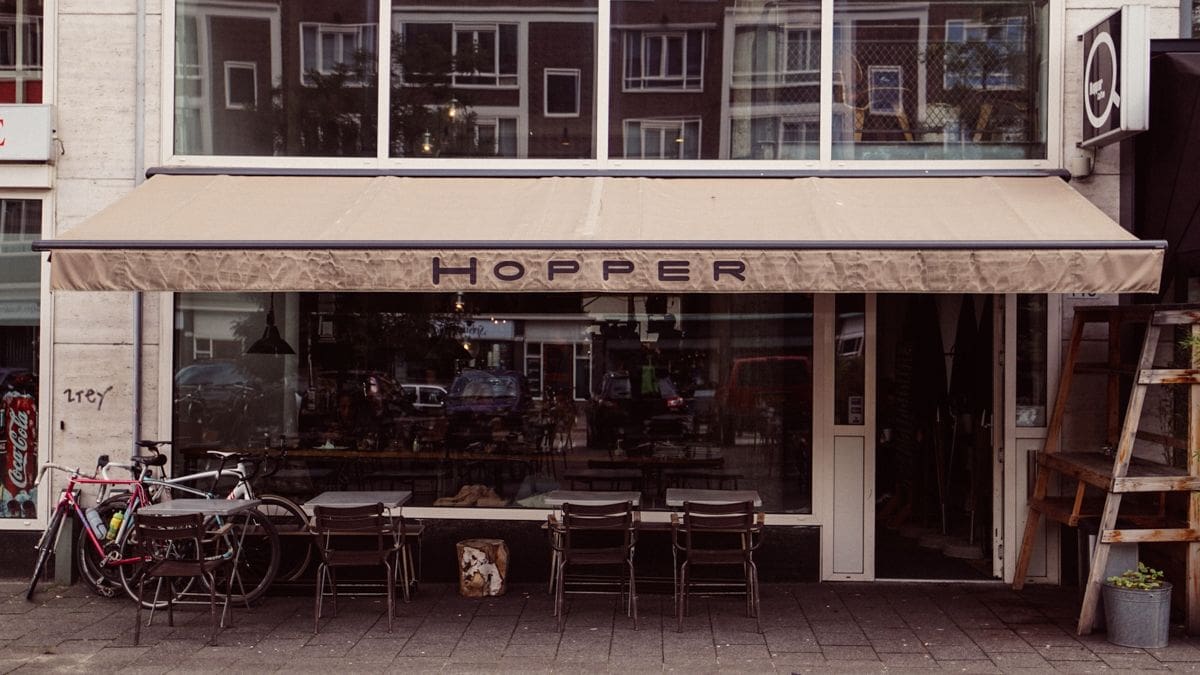
10. Fenix Food Factory
Located in the trendy Katendrecht neighborhood, Fenix Food Factory isn't your typical bar—it's a foodie's paradise with a vibrant craft beer scene. Housed in a former warehouse, this industrial-chic space is home to a collective of local producers, including a microbrewery that churns out some of Rotterdam's finest craft beers.
The vibe here is laid-back and communal, with long communal tables inviting patrons to mingle and share stories over a pint. What makes Fenix Food Factory special is its dedication to showcasing the best of Rotterdam's culinary scene, from artisanal cheeses and freshly baked bread to mouthwatering charcuterie. For beer enthusiasts, the bar offers a rotating selection of brews on tap, ensuring there's always something new to try.
Arrive early to snag a seat on the terrace overlooking the iconic Erasmus Bridge and sampling a selection of snacks from the various food stalls. Whether you're a beer aficionado, a food lover, or simply looking for a unique hangout spot, Fenix Food Factory promises an unforgettable experience in the heart of Rotterdam's burgeoning culinary scene.

11. Ballroom
In the heart of Rotterdam, there's a place where meatballs reign supreme, and gin-tonics flow like water. Welcome to the Ballroom, a bar that's as quirky as it is charming, offering a unique twist on your typical night out. The vibe here is vibrant and slightly eccentric, with a menu that features a dazzling array of gin-tonics, each paired perfectly with their signature meatballs.
What makes the Ballroom special isn't just its culinary pairings but the lively atmosphere that encourages patrons to let loose and enjoy.
Whether you're a gin aficionado or a meatball enthusiast, the Ballroom caters to all tastes, making it a must-visit for those seeking a fun and flavorful experience.

12. De Zondebok & 't ZwarteSchaap
Right in the beating heart of Rotterdam, De Zondebok & 't ZwarteSchaap (The Scapegoat & The Black Sheep) offers a fresh take on the traditional Dutch bar scene. With its sleek, modern design juxtaposed against historic architectural elements, this bar strikes a perfect balance between the contemporary and the classic. The atmosphere here buzzes with energy, attracting a diverse crowd that's drawn in by the eclectic mix of music, ranging from jazz to electronic beats.
What sets De Zondebok & 't ZwarteSchaap apart is its innovative approach to drinks and dining. The bar boasts an impressive selection of craft beers, local and international, alongside a carefully curated menu of cocktails that blend traditional flavors with modern mixology techniques. But it’s not just about the drinks; the food menu, though succinct, is thoughtfully designed to complement the beverage selection, featuring a mix of Dutch-inspired snacks and more substantial fare.
Check out the bar’s schedule for live DJ sets and special events, which are known to transform the space into one of Rotterdam's most vibrant nightlife spots. Whether you're in the mood for a laid-back evening sipping artisanal brews or a night out filled with music and dance, De Zondebok & 't ZwarteSchaap offers a welcoming space for all.
13. De Ouwehoer
Situated in the historic maritime district, De Ouwehoer pays homage to Rotterdam's rich seafaring past with its nautical-themed decor and robust drink selection. The vibe is cozy and intimate, offering a warm refuge where stories of the sea are shared over glasses of fine whiskey and rum.
What makes De Ouwehoer special is its commitment to creating an authentic experience, complete with maritime artifacts and a soundtrack of sea shanties and blues.
It's a bar that invites you to step back in time, to a world where sailors and adventurers congregated, sharing tales of their voyages. Whether you're a history buff or just in search of a strong drink in a unique setting, De Ouwehoer is your port of call.
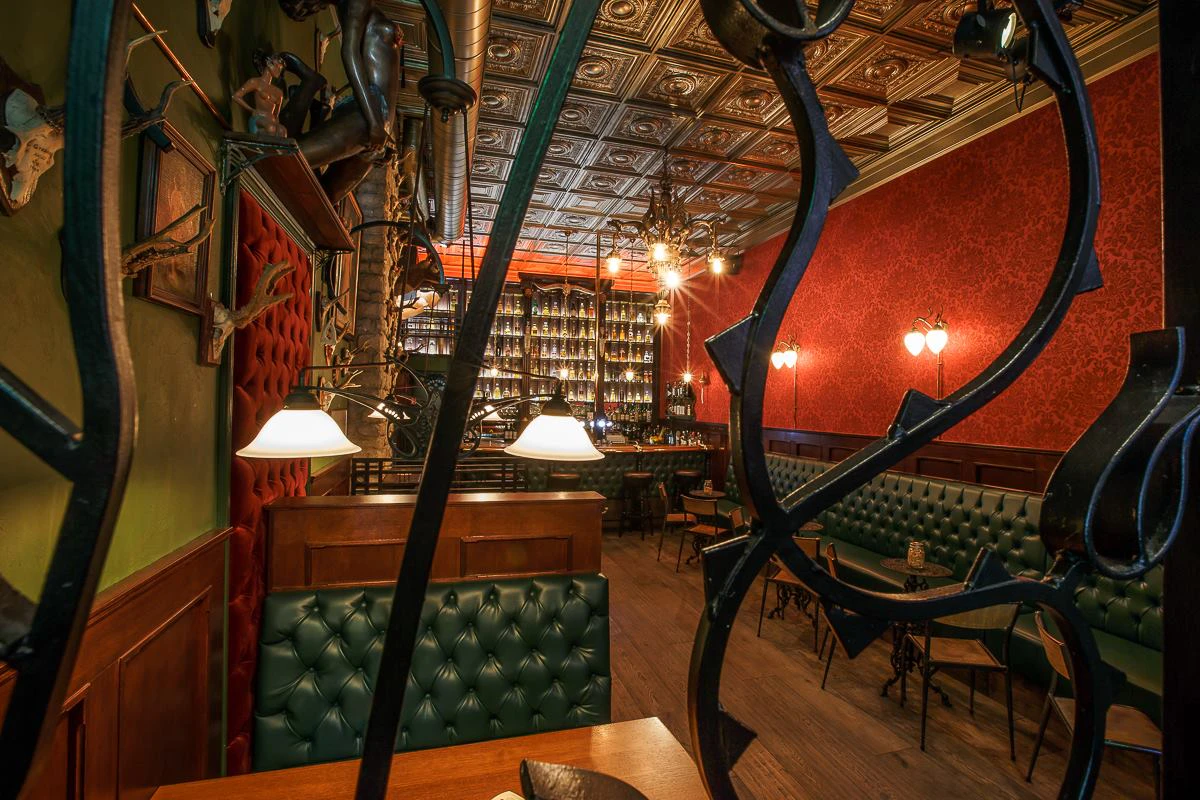
14. Bird
Nestled in the bustling heart of Rotterdam, Bird serves as a sanctuary for jazz lovers and night owls alike. This club and bar is dedicated to the rhythms of jazz, offering live performances that captivate and enchant. The atmosphere is laid-back and sophisticated, with a hint of urban grit that adds to its charm.
Bird is not just about music; it's a cultural hub where the art of the cocktail is celebrated, and the menu features an eclectic mix of dishes inspired by global cuisine.
For those seeking a night out that's both melodious and memorable, Bird provides a haven where the music flows as smoothly as the drinks, and every visit feels like a discovery.

15. Calaboose
In the Kralingen neighborhood, just a stone's throw from the bustling city center, lies Calaboose, a cozy bar with an intriguing twist. This hidden gem is known for its intimate vibe and eclectic decor, featuring dim lighting, plush seating, and walls adorned with vintage photographs and eclectic artifacts. Calaboose sets itself apart with a menu that's as unique as its ambiance, specializing in an array of creative cocktails and Indonesian-inspired small plates.
What makes Calaboose truly special is its fusion of cozy bar culture with the rich culinary traditions of Indonesia, offering patrons an immersive experience that tantalizes the taste buds and soothes the soul. The cocktail list is a testament to the bar's creativity, with each drink crafted to complement the spicy, aromatic flavors of the dishes served.
Make a reservation, especially on weekends, to secure a spot in this intimate space. Additionally, visitors are encouraged to explore the menu's diverse offerings, from the signature cocktails to the mouthwatering satays and rendang, making Calaboose the perfect spot for an evening of culinary exploration and relaxation. Whether you're looking for a quiet place to unwind or a unique dining experience, Calaboose offers a warm welcome and an unforgettable night out in Rotterdam.

16. Hotel New York Bar
Hotel New York Bar, set in the iconic former headquarters of the Holland America Line, offers more than just drinks; it's a dive into Rotterdam's rich maritime history. The ambiance here exudes a timeless elegance, a nod to the golden age of transatlantic travel. Patrons can enjoy a wide range of cocktails and spirits in a setting that feels both grand and intimate.
What truly makes the Hotel New York Bar special is its ability to transport guests to a bygone era, all while providing stunning views of the Maas River and the modern Rotterdam skyline.
It's a place where history and modernity meet, offering a unique experience for those looking to enjoy their evening in a venue that tells a story.

17. Paddy Murphy’s Irish Pub
For a touch of Irish charm and a guaranteed good time, Paddy Murphy’s Irish Pub is your go-to in Rotterdam. This bar captures the essence of a traditional Irish pub, with its warm, welcoming atmosphere, live music, and an impressive selection of beers and whiskeys.
Whether you're there to catch a live sports event or simply enjoy a night out with friends, Paddy Murphy’s provides a lively, friendly setting that's hard to beat. The pub frequently hosts quiz nights and live music performances, making every visit a new adventure.
For those looking to experience the heart and soul of Ireland right in the center of Rotterdam, Paddy Murphy’s Irish Pub is the place to be.

18. Dizzy Jazz Café
Dizzy Jazz Café is more than just a bar; it's a cultural institution in Rotterdam, celebrating the city's deep-rooted love for jazz and live music. The vibe here is effortlessly cool, with a soulful ambiance that attracts a diverse crowd of music lovers.
Dizzy offers a lineup of local and international jazz acts, setting the stage for unforgettable nights filled with soul-stirring performances. Alongside the music, the café serves up a menu of delicious bites and a fine selection of drinks, making it the perfect spot to unwind and soak in the city's vibrant cultural scene.
For those seeking a laid-back evening filled with good tunes and great company, Dizzy Jazz Café promises an experience that resonates with the soul of Rotterdam.

19. Jack's Cider House
Tucked away in the lively Witte de Withstraat area, Jack's Cider House introduces a refreshing twist to Rotterdam's bar scene. This cozy establishment celebrates the art of cider, offering an extensive selection that ranges from traditional English ciders to innovative local brews. The warm, inviting atmosphere, with its rustic wooden decor and soft lighting, makes it the perfect spot for both cider aficionados and curious newcomers alike.
What sets Jack's Cider House apart is its dedication to showcasing the versatility of cider. Guests can explore a variety of flavors, from dry and tart to sweet and fruity, each sourced from the finest orchards around the globe. The knowledgeable staff is always on hand to guide you through the menu and share the fascinating stories behind each bottle.
In addition to its impressive cider selection, Jack's offers a menu of hearty, cider-infused dishes and seasonal snacks designed to complement the drinking experience. From cider-braised pork to apple-based desserts, the culinary offerings add an extra layer of enjoyment to your visit.
Check out their tasting events, where you can sample a range of ciders and learn about the production process. With its welcoming vibe and unique focus, Jack's Cider House stands out as a must-visit destination for those seeking to indulge in the crisp, refreshing world of cider in the heart of Rotterdam.

20. Mooie Boules
Mooie Boules brings a unique concept to Rotterdam's bar scene, combining the casual fun of playing boules with the enjoyment of good food and drinks. This vibrant venue is perfect for those looking for an active night out, offering several indoor boules courts where friends can compete while enjoying a lively atmosphere.
The bar area is just as inviting, with a selection of local craft beers, wines, and cocktails, along with a mouthwatering menu of street food-inspired dishes. Mooie Boules embodies the spirit of fun and camaraderie, making it an ideal destination for groups looking to add a bit of competitive edge to their evening.
Whether you're a boules pro or a complete novice, Mooie Boules guarantees an enjoyable and memorable night out.

Rotterdam's nightlife is as diverse and dynamic as the city itself, offering something for everyone, from history buffs and jazz enthusiasts to cocktail connoisseurs and beer aficionados.
Each of the 20 bars highlighted here contributes to the city's vibrant nightlife tapestry, providing unique experiences that reflect the spirit and culture of Rotterdam.
Whether you're seeking an intimate evening, a lively night out, or an innovative drinking experience, Rotterdam's bars welcome you with open arms. So, delve into the city's nightlife, explore these gems, and make memories that will last a lifetime. In Rotterdam, the night is truly yours to discover.
The Best Real Ale Pubs in Central London: Experience Authentic British Brews
March 22, 2024
The Quintessential Quench - A Tale of Ale in Central London
Imagine this: You're meandering through the historic streets of Central London, the air brisk with the promise of adventure and the echoes of centuries past. Suddenly, the inviting glow of a pub sign beckons. You step inside, and a pint of the most exquisite real ale you've ever tasted hits your lips. Welcome to the timeless allure of Central London's real ale pubs, where every sip tells a story.
Real ale, a hero of British pub culture, is more than just a drink; it's a craft, a tradition, and, to many, a way of life. Its significance is woven into the very fabric of British history, offering a taste that's as authentic as it gets. This guide isn't just about finding a good pint; it's about experiencing the soul of London through its best real ale pubs. So, let's keep things relaxed but edgy as we embark on a tour that promises authentic British brews and an adventure that's anything but ordinary.

The Real Ale Revolution
Before we dive into our pub crawl, let's take a moment to appreciate the frothy beverage that's caused quite the stir across the British Isles. Real ale is not just any beer. It's a living, breathing entity, traditionally served from the cask without additional nitrogen or carbon dioxide pressures. Its revival and the surge of interest in craft brewing have sparked what many affectionately call the "Real Ale Revolution."
A Brief History of Hops and Heart
It all began centuries ago, with real ale at the heart of British pub culture. Yet, as time marched on, this beloved beverage found itself edged out by its flashier, more industrialized cousins. That was until the 1970s when CAMRA (Campaign for Real Ale) said, "Hold my beer," and mounted a comeback campaign that would reignite the nation's love affair with ale.
Craftsmanship in a Glass
What sets real ale apart is its craft. Each pint is a masterpiece, a testament to the dedication and passion of those who brew it. It's about the quality of the ingredients, the mastery of the process, and the art of the pour. In a world of mass-produced beers, real ale stands out as a beacon of authenticity and taste.
The CAMRA Effect
Thanks to the efforts of CAMRA and the growing thirst for genuine experiences, real ale has reclaimed its throne in the pub scene. This movement hasn't just revived traditional brewing techniques; it's sparked a renaissance of pub culture, where community, history, and a good pint are celebrated.
The Revolution Lives On
Today, the Real Ale Revolution is more than a revival; it's a vibrant part of modern British identity, blending tradition with innovation. Pubs across Central London are at the forefront, serving up not just pints but stories, ambiance, and a sense of belonging.
The Best Real Ale Pubs In Central London
1. The Harp, Covent Garden - "The Ale Artisan's Dream"
In the heart of London, where the streets hum with history and the arts take center stage, The Harp stands out as a beacon for real ale aficionados. This isn't just a pub; it's a sanctuary for those who cherish the craft behind the pint.
Snapshot: A Symphony of Flavors in Every Sip
As you step through the door of The Harp, you're immediately embraced by an atmosphere that's as vibrant as the area it inhabits. Covent Garden, known for its cultural flair and bustling market, reflects perfectly the lively spirit of The Harp. With its colorful facade and equally vibrant interior, this pub draws you into a world where real ale is celebrated with passion.
What Makes It Unique: A Palette of Ales
The Harp is renowned for its meticulously curated selection of real ales. From the classic bitters to the more adventurous IPAs and stouts, each ale is chosen for its quality and character. The bar staff are not just servers; they're connoisseurs, ready to guide you to your perfect pint.
But it's not just about the ale. The Harp's traditional pub atmosphere, complete with a collection of beautiful harps and an eclectic mix of portraits adorning its walls, offers a genuine slice of London life. Here, conversation flows as freely as the ale, creating an environment that's both welcoming and distinctly British.
A Touch of Covent Garden Charm
On a sunny day, The Harp's outdoor seating becomes a coveted spot for enjoying a pint while watching the world go by. It's a place where you can soak up the unique energy of Covent Garden, all while indulging in some of the best real ale London has to offer.
Why It's Unmissable
For those seeking an authentic real ale experience in Central London, The Harp is more than a pub—it's a destination. Its award-winning reputation is well-earned, celebrating the essence of what makes real ale so special: craftsmanship, community, and a touch of creativity. Whether you're a dedicated ale enthusiast or simply curious about what makes British pub culture so iconic, The Harp offers an unforgettable experience that's as rich and diverse as the ales it serves.

2. The Southampton Arms, Kentish Town - "The Craft Ale Crusader"
Just a bit off the beaten path, in the character-rich neighborhood of Kentish Town, lies The Southampton Arms. With its steadfast dedication to independent breweries and a no-frills approach to pub culture, this spot is a crusader for the craft ale movement.
Snapshot: Simplicity and Sincerity in Every Pour
Entering The Southampton Arms is like stepping into a bygone era where the ale does the talking, and the ambiance sets the mood for genuine interactions. With its wooden benches, a piano ripe for impromptu sing-alongs, and a bar lined with hand-pulled ale taps, this pub eschews modern gimmicks for authenticity.
Unique Offerings: A Celebration of Independents
Pride in independence is the hallmark of The Southampton Arms. Offering a rotating selection of 18 real ales and ciders, all sourced from small, independent breweries across the UK, this pub showcases the diversity and creativity of the country's ale scene. Each visit promises something new, encouraging regulars and newcomers alike to explore the breadth of flavors on tap.
The menu is a testament to simplicity done right, featuring hearty, traditional pub snacks that perfectly complement the ales. Pork pies, scotch eggs, and hand-raised sausage rolls are among the favorites, made fresh and sourced from local suppliers who share the pub's commitment to quality and community.
The Heart of Kentish Town
What sets The Southampton Arms apart is not just its ale selection or its traditional pub snacks but its ability to serve as a communal hub. It's a place where locals and visitors converge, drawn by the shared love of good ale and good company. The pub's ethos, emphasizing simplicity, quality, and community, resonates in every detail, from the décor to the friendly, knowledgeable staff.
A Must-Visit for Real Ale Enthusiasts
For those passionate about supporting independent breweries and experiencing the charm of a truly local pub, The Southampton Arms is a pilgrimage worth making. It's a reminder of the vibrant, grassroots ale culture that thrives in London's neighborhoods, offering a warm welcome and a pint poured with care.

3. Ye Olde Cheshire Cheese, Fleet Street - "The Timeless Ale Chronicle"
Tucked away on Fleet Street, a thoroughfare with a storied history of ink and intrigue, Ye Olde Cheshire Cheese offers a portal to the past for the ale enthusiast. Rebuilt in 1667 after the Great Fire of London, this pub has quenched the thirst of literary giants and common folk alike, maintaining an atmosphere that's as captivating now as it was centuries ago.
Snapshot: A Journey Back in Time
The moment you step into Ye Olde Cheshire Cheese, you're enveloped in a sense of history that's almost tangible. Low ceilings, dark wood paneling, and narrow passageways lead you through a maze of rooms, each with its own story. It's a place where the modern hustle of London fades away, replaced by the warm glow of fireplaces and the murmur of conversations that could belong to any era.
A Legacy in Ale
Ye Olde Cheshire Cheese's ale selection is a tribute to tradition, offering a range of beers that celebrate the heritage of British brewing. While the choices may not be as extensive as in more modern establishments, the focus here is on quality and tradition. Sampling a pint in the very same nooks where the likes of Charles Dickens and Samuel Johnson once debated and dreamed adds a flavor that no other pub can replicate.
A Tapestry of Tales
More than just a pub, Ye Olde Cheshire Cheese is a living museum, a testament to the enduring allure of London's pub culture. The plaques and portraits adorning its walls tell of its illustrious past, inviting patrons to become part of its ongoing story. It's a place where every creak of the floorboards and whisper from the past enriches your visit.
Why It Stands Unmatched
In a city that's constantly changing, Ye Olde Cheshire Cheese remains a steadfast reminder of the timeless appeal of gathering over a good pint. It offers not just a drink but an experience, a chance to step out of time and sip on the essence of London's history. For visitors and locals alike, it represents an opportunity to connect with the city's past in the most authentic setting possible.

Navigating London's Ale Scene
Embarking on an ale-tasting adventure in Central London is more than just pub hopping—it's a voyage into the heart of British culture. To navigate this scene like a seasoned local, consider these insider tips:
- Embrace the Pub Crawl: London's layout, particularly in its historic center, is perfect for a pub crawl. Start early and pick pubs with distinct characters, like the ones we've explored. Each pint will be a chapter in your London story.
- Festival Fervor: Time your visit with one of London's numerous real ale festivals. CAMRA hosts events year-round that showcase the best of British brewing. It's not just about tasting; it's about celebrating the craft with fellow ale enthusiasts.
- Food Pairings: Many pubs, especially those focusing on real ale, offer menus crafted to complement their brews. Don't miss out on the chance to elevate your pint with the perfect pie or a hearty stew. It's a pairing that's been perfected over centuries.
Beyond the Pint Glass
While the allure of discovering the best real ale pubs is strong, remember that each pint poured is a story of community, tradition, and innovation. These pubs are not just places to drink; they're sanctuaries where time slows down, conversations flow, and friendships bloom. They're where the heart of London beats the strongest, amidst the clinking of glasses and the laughter of friends.
A Toast to Your Adventure
As our tour concludes, we hope your thirst for both knowledge and real ale has been whetted. Central London's pubs offer more than just a good drink; they're a gateway to the soul of the city. In every pint of real ale, there's history, passion, and a dash of rebellion—a reminder that the best experiences often come in simple packages.
So, here's to your next adventure in London's historic pubs, where every sip tells a story, and every visit leaves a mark. May your journey be filled with discovery, camaraderie, and, of course, the finest real ale you can find. Cheers!
10 Secret Spots to Enjoy a Few Beers in London
March 22, 2024
Friday afternoon is approaching, and the time has come to head out and enjoy a few beers in London.
Imagine slipping through the shadows of London's bustling streets, away from the glaring lights and the cacophony of the crowds, into a world where the beer flows as freely as the Thames and every pint tells a story. This isn't your run-of-the-mill tour of London's beer spots. Oh no, we're diving deeper, into the heart of the city's hidden gems where the true essence of London's beer culture thrives, away from the prying eyes of the typical tourist.
Here, it's not just about tasting; it's about experiencing. Welcome to the ultimate guide to London's secret spots for enjoying a few beers, a journey that promises discovery, indulgence, and a little bit of that London magic.
The Hidden Gems of London's Beer Scene
Let's take a walk down the winding alleys and hidden doorways of London, uncovering the spots that even some locals haven't stumbled upon. It's a blend of the historical and the modern, the quaint and the quirky, each with its own story, its own flavor, and its own pint (or two) of beer waiting to be savored. Let's toast to the unknown and explore the 10 secret spots to enjoy a few beers in London.
1. The Grenadier - A Haunted Heritage
Nestled away in the refined streets of Belgravia, hidden from the casual passerby, lies The Grenadier. This pub doesn't just serve beer; it serves a hefty dose of history, draped in ghostly tales. Once a barracks mess for British Grenadier Guards, it's said to be haunted by the spirit of a soldier caught cheating at cards.
The Grenadier's dimly lit rooms, with their low ceilings and military memorabilia, transport you back in time. Here, the atmosphere is thick, not just with the aroma of ale but with the anticipation of encountering the supernatural.
The pub's most chilling allure is the tale of the spectral soldier, reputed to wander the premises. Patrons have been known to leave money on the ceiling to pay off his debt and appease his restless spirit. It adds an extra layer of intrigue to your visit, making each pint feel like a communion with the past.

2. Ye Olde Mitre - A Hidden History
In the labyrinthine heart of Hatton Garden, concealed by the gleam of diamond shops, you'll stumble upon Ye Olde Mitre. This pub is a slice of Elizabethan London, built in 1546 for the servants of the Bishops of Ely. Its history is as rich as the ales it pours, a testament to the endurance of London's spirit.
Walking into Ye Olde Mitre is like stepping through a time warp. Its snug rooms, crooked floors, and the ancient tree around which the pub was built, all tell stories of a London few remember.
Here, the beer is just part of the experience. The real treasure is the pub's ambiance, a blend of conviviality and the palpable presence of the past. It's a place where you can lose hours conversing with locals and tourists alike, all drawn in by the pub's historical gravity.
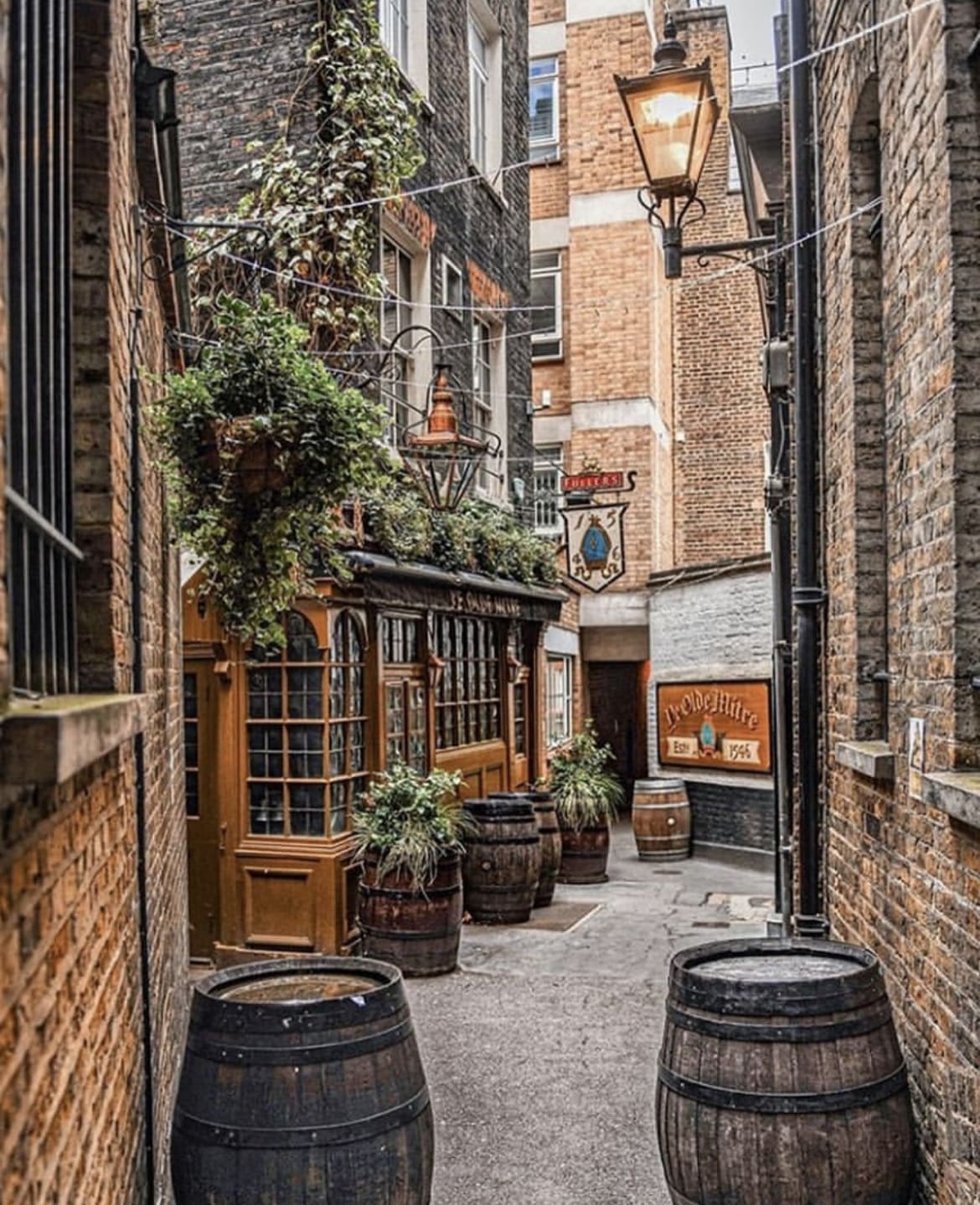
3. The Seven Stars - A Legal Luminary
Just a stone's throw from the Royal Courts of Justice, The Seven Stars is a beacon for those in search of refuge from the legal storm. With its foundations laid in 1602, this pub has seen London evolve, surviving the Great Fire and the Blitz, standing as a testament to resilience.
The pub's facade, with its vintage signage and traditional leaded windows, promises an escape into a world where time moves at a leisurely pace. Inside, the eclectic mix of legal tomes, aged wood, and the resident cat add to its charm, creating an atmosphere that's both cozy and slightly eccentric.
What makes The Seven Stars truly unique is its blend of history with a dash of quirkiness, courtesy of its legal clientele and the stories they bring. It's a place where you can overhear tales of courtroom drama one moment and discuss the nuances of London's ales the next.

4. Gordon's Wine Bar - Vintages in the Vaults
While not a pub in the traditional sense, Gordon's Wine Bar offers a pub-like atmosphere that beer aficionados and wine lovers alike can appreciate. Established in 1890, it's London's oldest wine bar, nestled into the embankment's Victorian arches, offering a journey back to a time when the world moved at the pace of a pouring drink.
The candlelit interior, with its ancient wooden furniture and walls lined with historical press clippings, creates an ambiance of intimacy and warmth. The cellar, with its dusty bottles and vaulted ceilings, feels like a secret meeting place for those in the know.
Gordon's unique charm lies in its ability to transport you to a bygone era. It's a place where the hustle of modern London fades away, replaced by the soft murmur of conversation and the clink of glasses. Here, the experience is about more than just the drink; it's about soaking in the history that permeates the air.
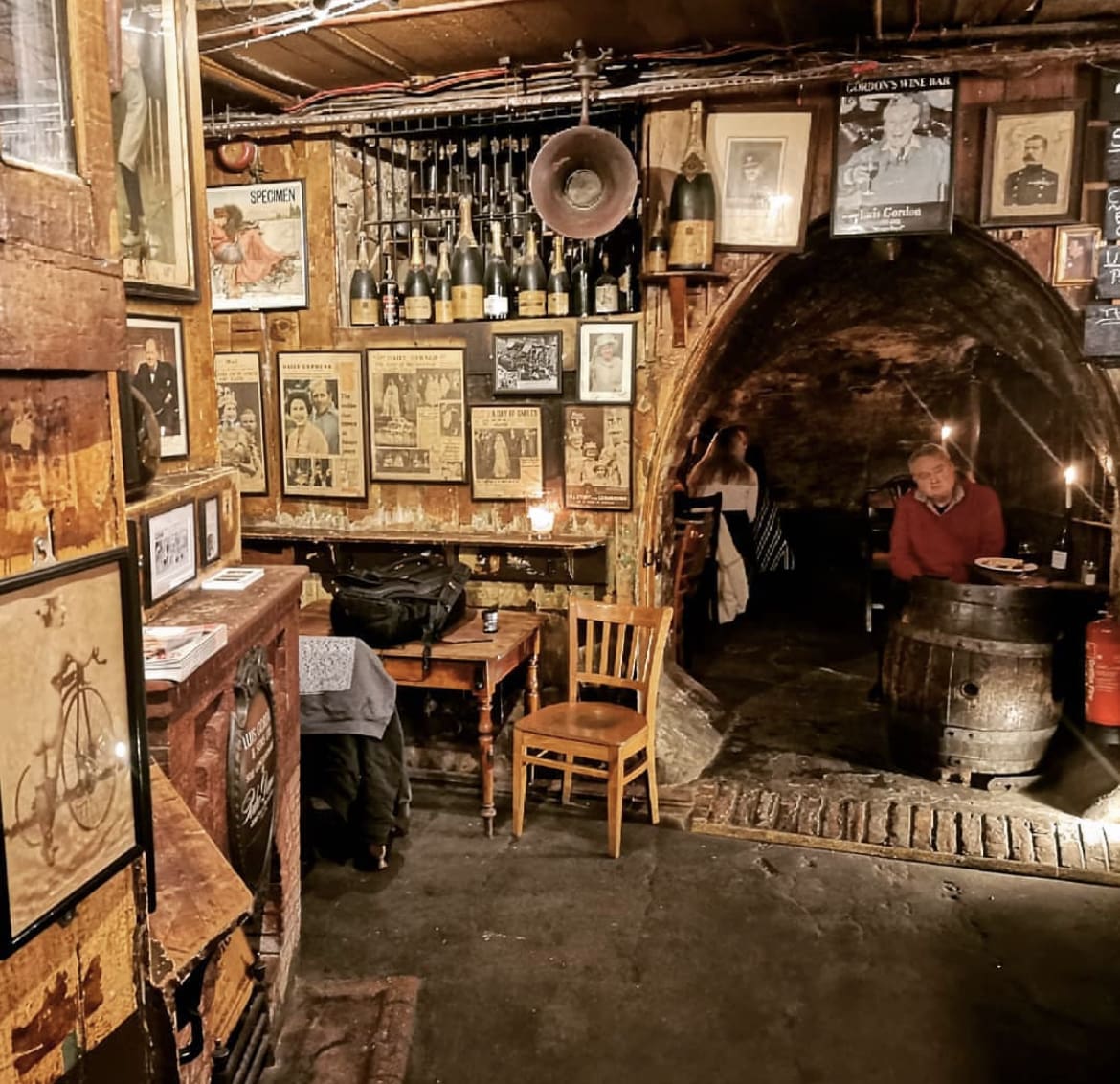
5. The Cheshire Cheese - Rebuilt from the Ashes
Venture down Fleet Street, a thoroughfare echoing with the ghosts of journalists past, and you'll find The Cheshire Cheese. Rebuilt shortly after the Great Fire of 1666, this pub offers more than just respite and good ale; it serves as a living museum to London's indomitable spirit.
Stepping into The Cheshire Cheese, you're enveloped in an ambiance thick with history. The wood-paneled walls, low ceilings, and narrow staircases speak of centuries of patronage, with literary greats like Charles Dickens rumored among them. It's a place that feels untouched by time, a rare gem in the heart of the city.
The pub's ability to survive and thrive after the Great Fire symbolizes London's resilience. Each pint served is a nod to the city's ability to rise from the ashes, making The Cheshire Cheese a must-visit for those looking to drink in a bit of London history along with their beer.

6. The Prospect of Whitby - London's Riverside Relic
With a history dating back to 1520, The Prospect of Whitby lays claim to the title of London's oldest riverside tavern. Once a haunting ground for smugglers and a favorite among sailors, this pub offers a tangible connection to the city's maritime past.
The Prospect of Whitby's weathered wooden floors and flagstone terrace offer stunning views of the Thames, a reminder of the river's central role in London's history. The pub's nautical memorabilia, from ship wheels to model vessels, adorns the space, creating an atmosphere that's both historic and inviting.
Standing on the terrace, pint in hand, it's easy to imagine the bustling port London once was, with ships from around the globe bringing goods and tales to its docks. The Prospect of Whitby is not just a place for enjoying a beer; it's a venue for time travel, offering views not only across the river but through the centuries.

7. The Mayor of Scaredy Cat Town - A Speakeasy Surprise
In the heart of Spitalfields, hidden behind the guise of a simple fridge door in The Breakfast Club café, lies The Mayor of Scaredy Cat Town. This speakeasy-style bar is London's cheeky nod to the Prohibition era, offering a clandestine spot for those in the know to enjoy a cocktail or two in secret delight.
The thrill of The Mayor of Scaredy Cat Town begins with its entrance. Stepping through a refrigerator door, guests are transported from a bustling café into a dimly lit, cozy bar. It's a place where the modern meets the mysterious, and where every drink comes with a side of intrigue.
The bar's playful secrecy is part of its charm, creating an atmosphere that's both whimsical and slightly illicit. It's as if you've been let in on a grand secret, a member of an exclusive club where the password is simply knowing where the door is.

8. The Black Friar - An Architectural Alehouse
Nestled on the edge of Blackfriars Bridge, The Black Friar stands out for its stunning Art Nouveau architecture and its history as a refuge for thirsty souls since 1905. This pub is a masterpiece of design, with its jutting angles and intricate reliefs that tell the tale of the area's monastic past.
Entering The Black Friar, guests are greeted by the warmth of polished brass and the glow of stained glass. The interior, adorned with sculptures and mosaics, creates a sanctuary-like atmosphere, where beer is almost a sacrament, and the surroundings uplift the spirit.
The beauty of The Black Friar is in its details. From the marble counters to the decorative ceilings, every inch of the pub is a testament to the craftsmanship of a bygone era. It's a place where the aesthetics of the pint and the pub are in perfect harmony, offering a visual feast to accompany the flavors of the ale.

9. The Nags Head - Knightsbridge's Cozy Corner
Amid the glamour and polish of Knightsbridge, there lies a secret waiting to be discovered by those yearning for a slice of authentic London pub culture. The Nags Head, a quaint and cozy establishment, offers a stark contrast to the surrounding opulence, providing a warm welcome to anyone looking for a genuine pub experience.
The Nags Head is a treasure trove of traditional British charm. With its low ceilings, wooden beams, and fireplace aglow, it creates an atmosphere of comfort and warmth that invites you to stay, relax, and enjoy. Here, the hustle of the city fades away, replaced by the friendly chatter of locals and the clinking of glasses.
This pub's allure lies in its ability to make everyone feel at home, whether you're a Londoner or just passing through. It's a place where stories are shared, laughter is abundant, and the beer is always served with a smile. The Nags Head stands as a testament to the timeless appeal of a truly local pub in the heart of one of the world's most cosmopolitan cities.
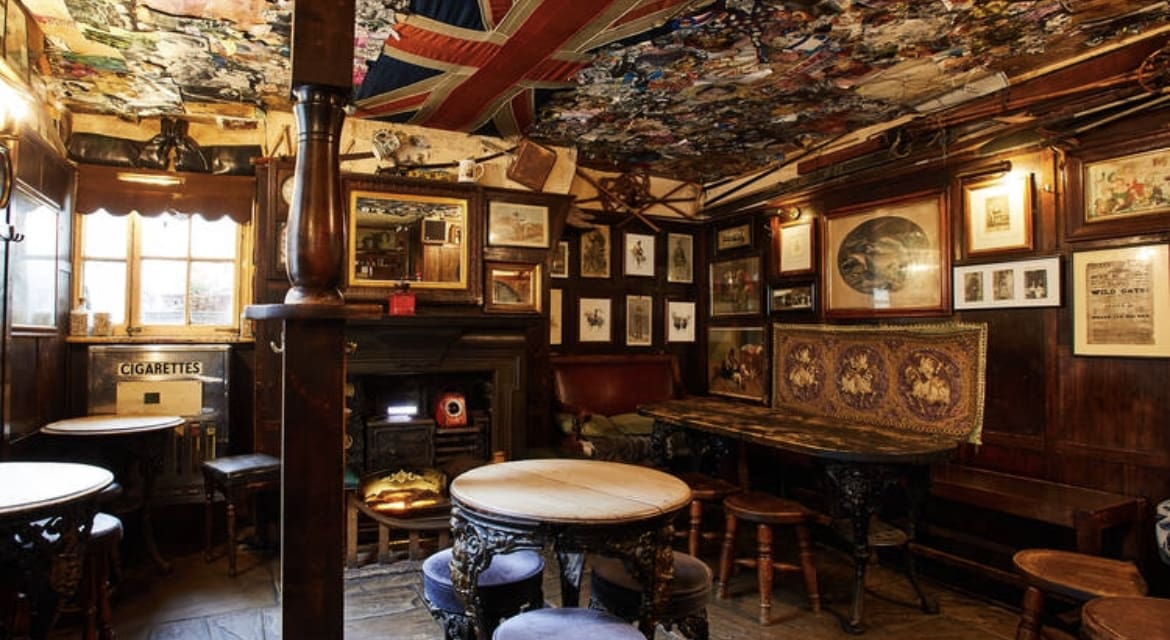
10. The Dove - A Pint with a View
On the picturesque banks of the Thames in Hammersmith, The Dove beckons. More than just a pub, it's a historic retreat that has charmed poets, playwrights, and punters for centuries with its idyllic setting and its claim to the smallest bar room in the world.
The Dove's allure is multifaceted. Its interior, with wood-paneled walls and cozy nooks, tells the story of countless social gatherings, while outside, its riverside terrace offers one of the most tranquil views in London. It's a place where time slows down, allowing patrons to savor their drinks against the backdrop of the Thames.
With records dating back to the 17th century and a guest list that includes literary figures like James Thomson, who composed "Rule, Britannia!" here, The Dove is not just a pub; it's a piece of London's cultural heritage. Its history adds depth to every visit, offering a connection to the creative spirits who've frequented its rooms.






